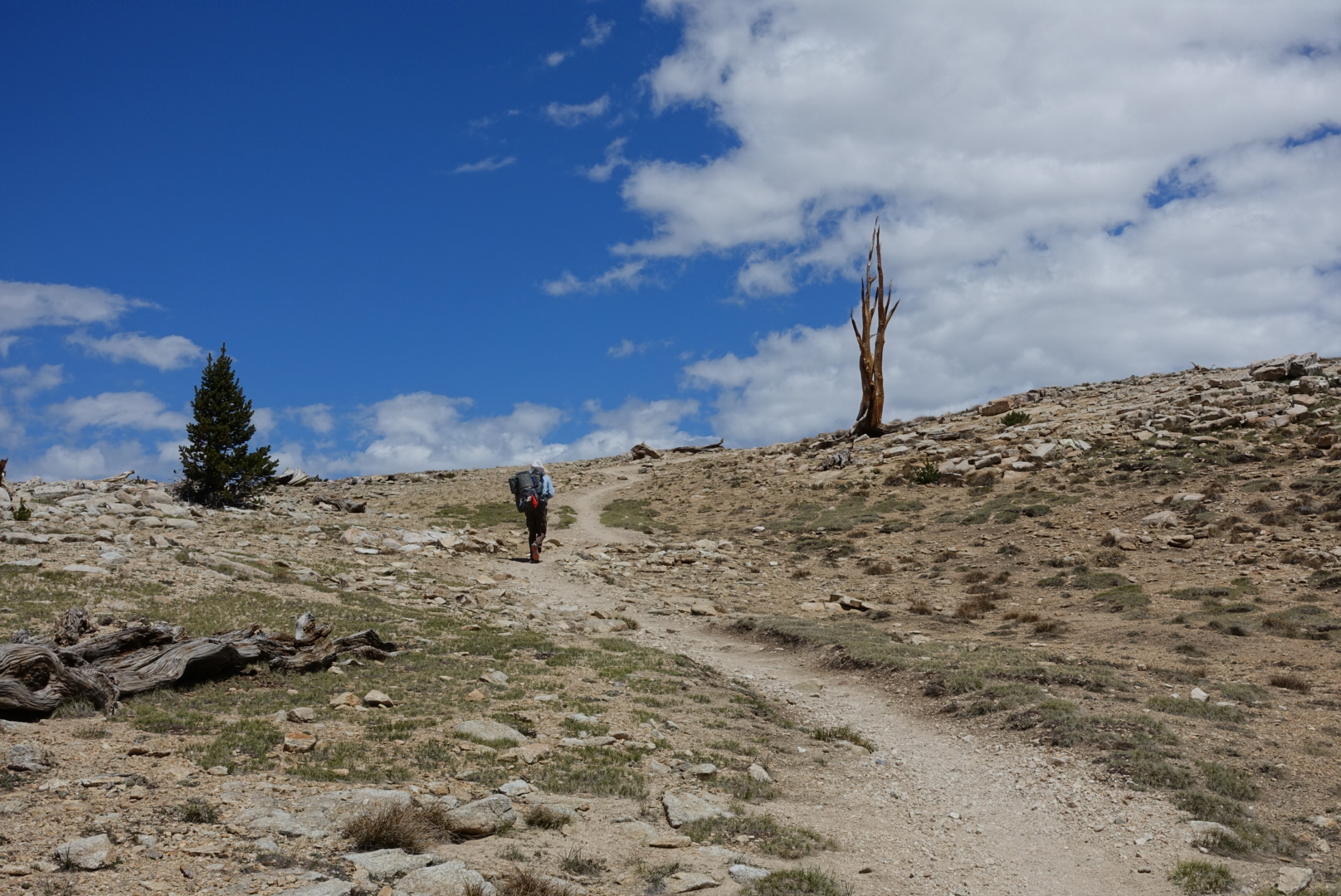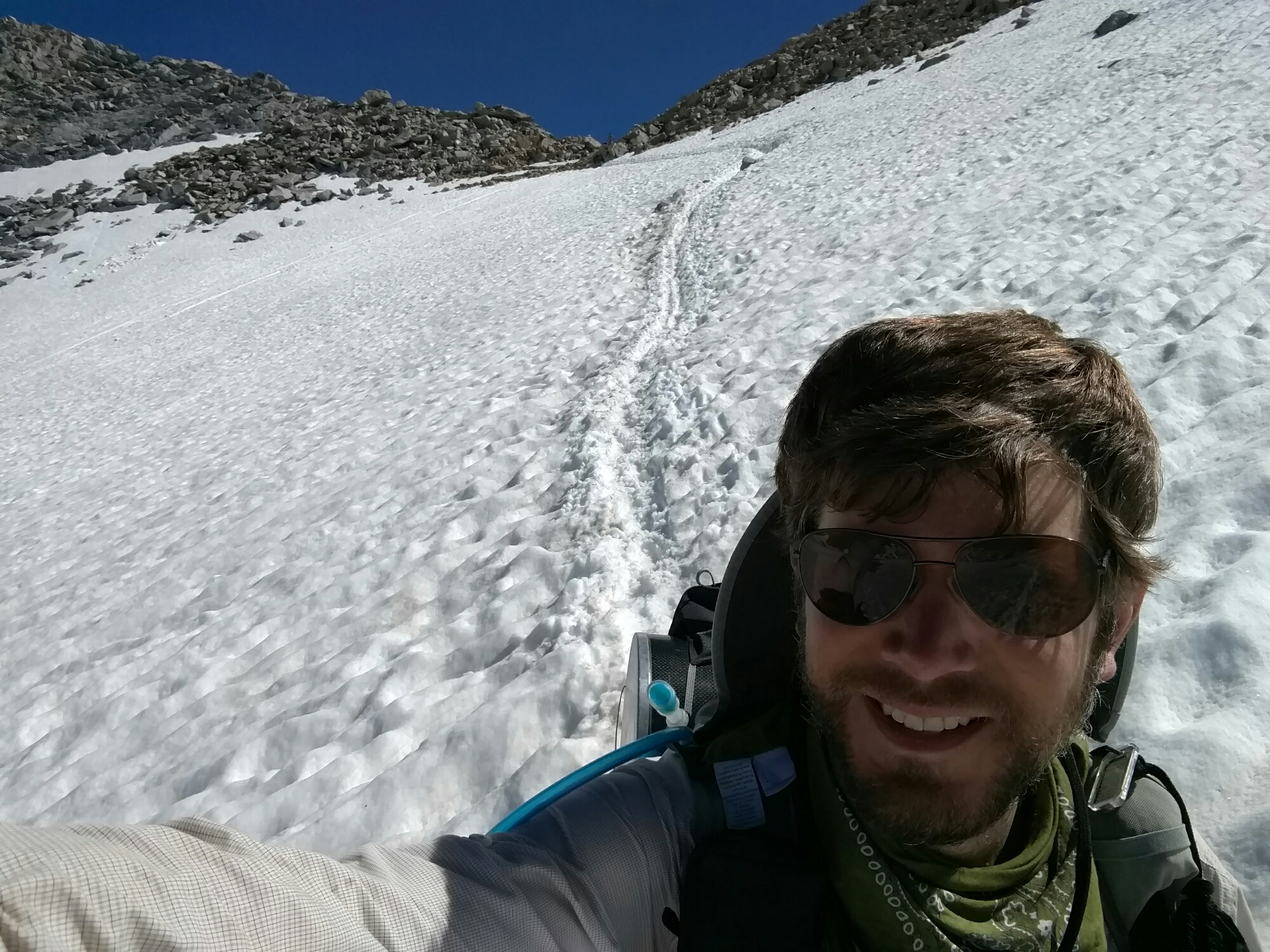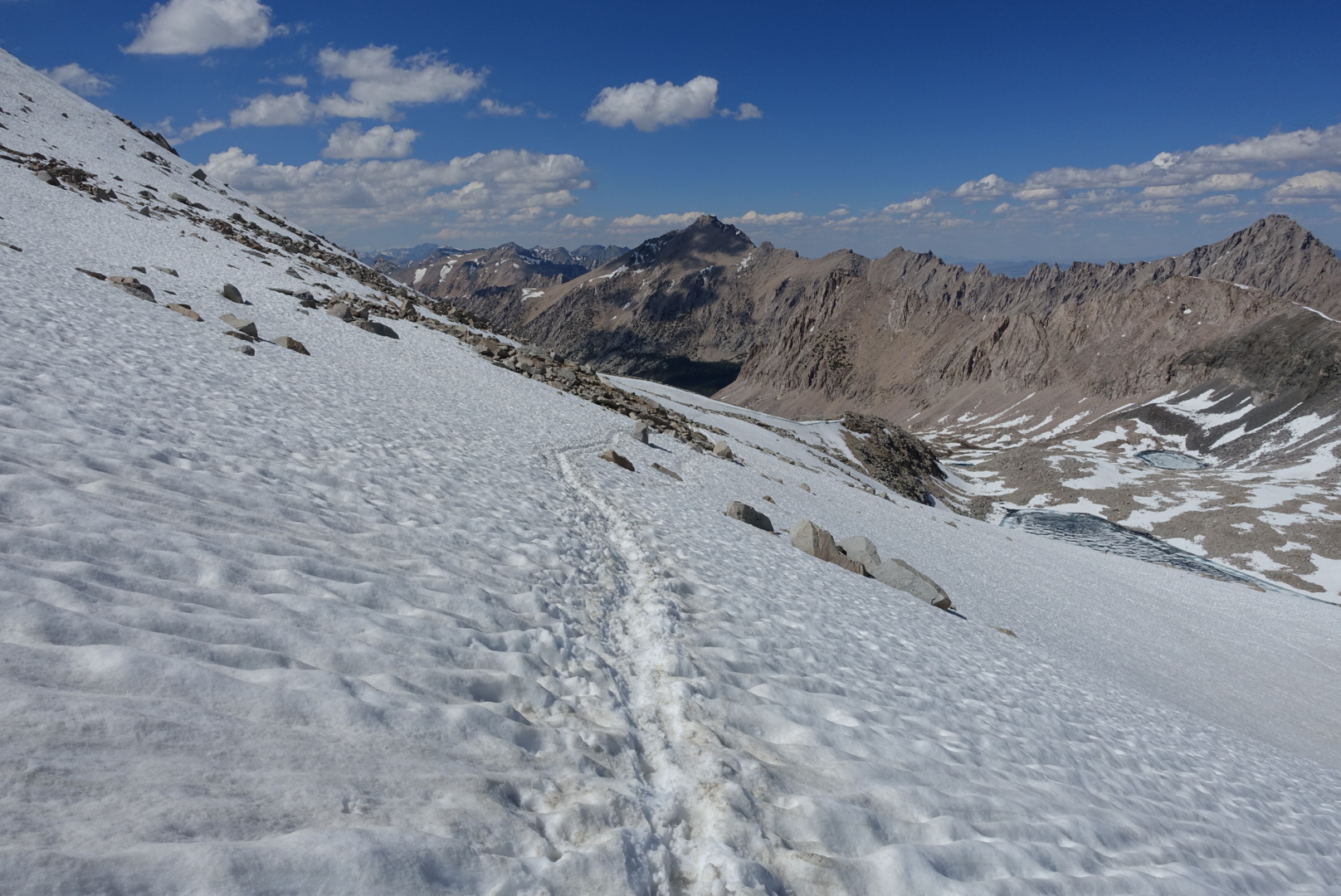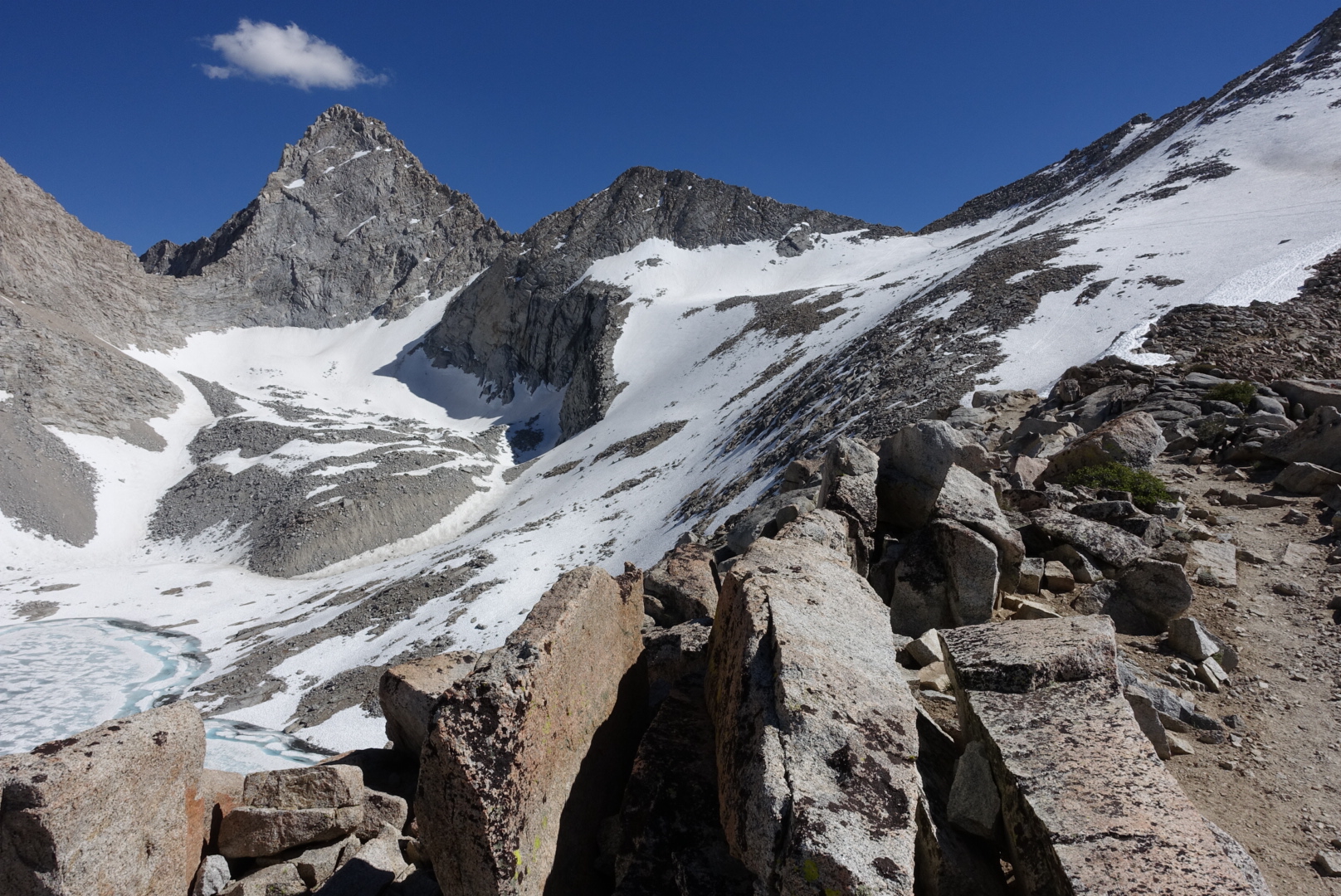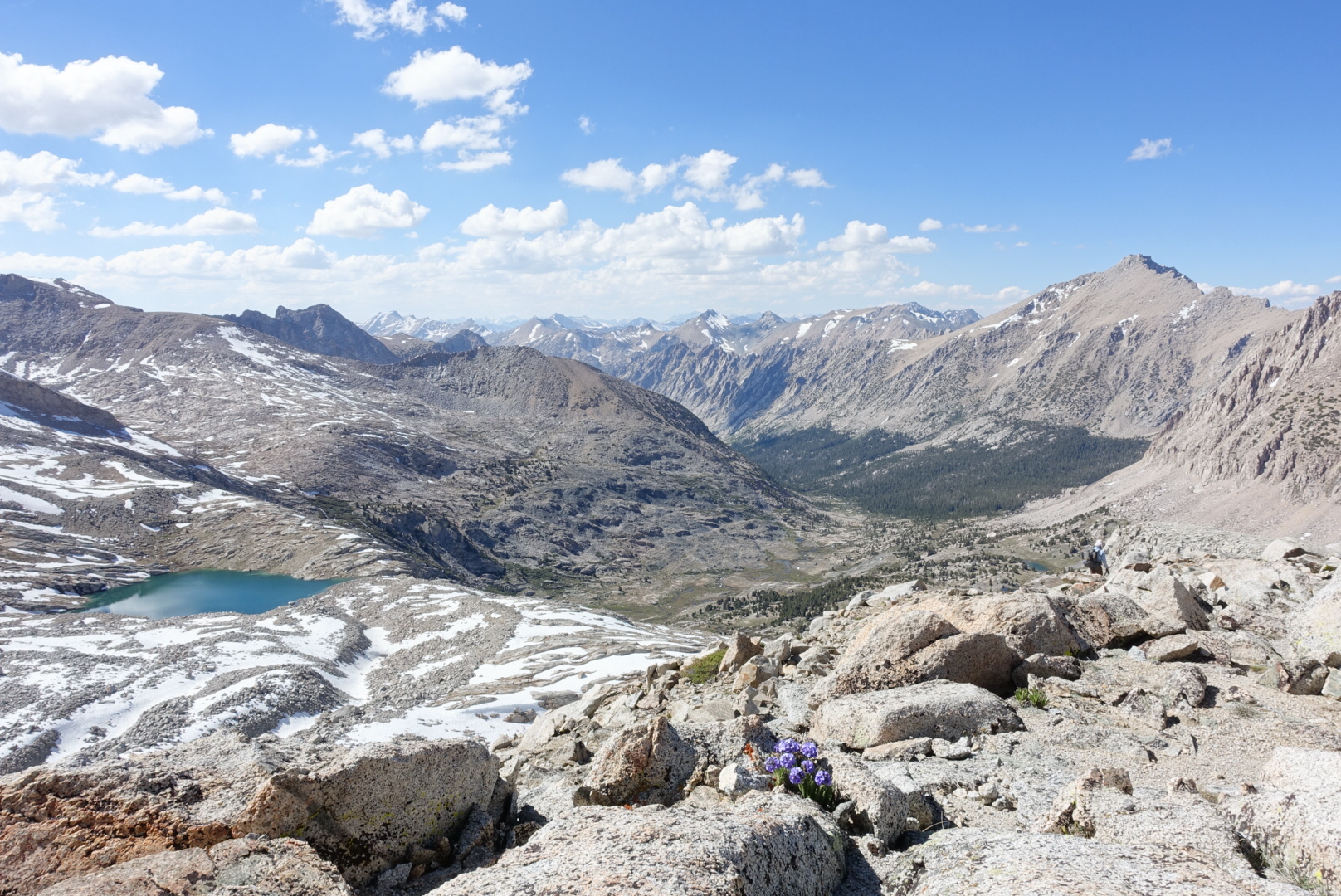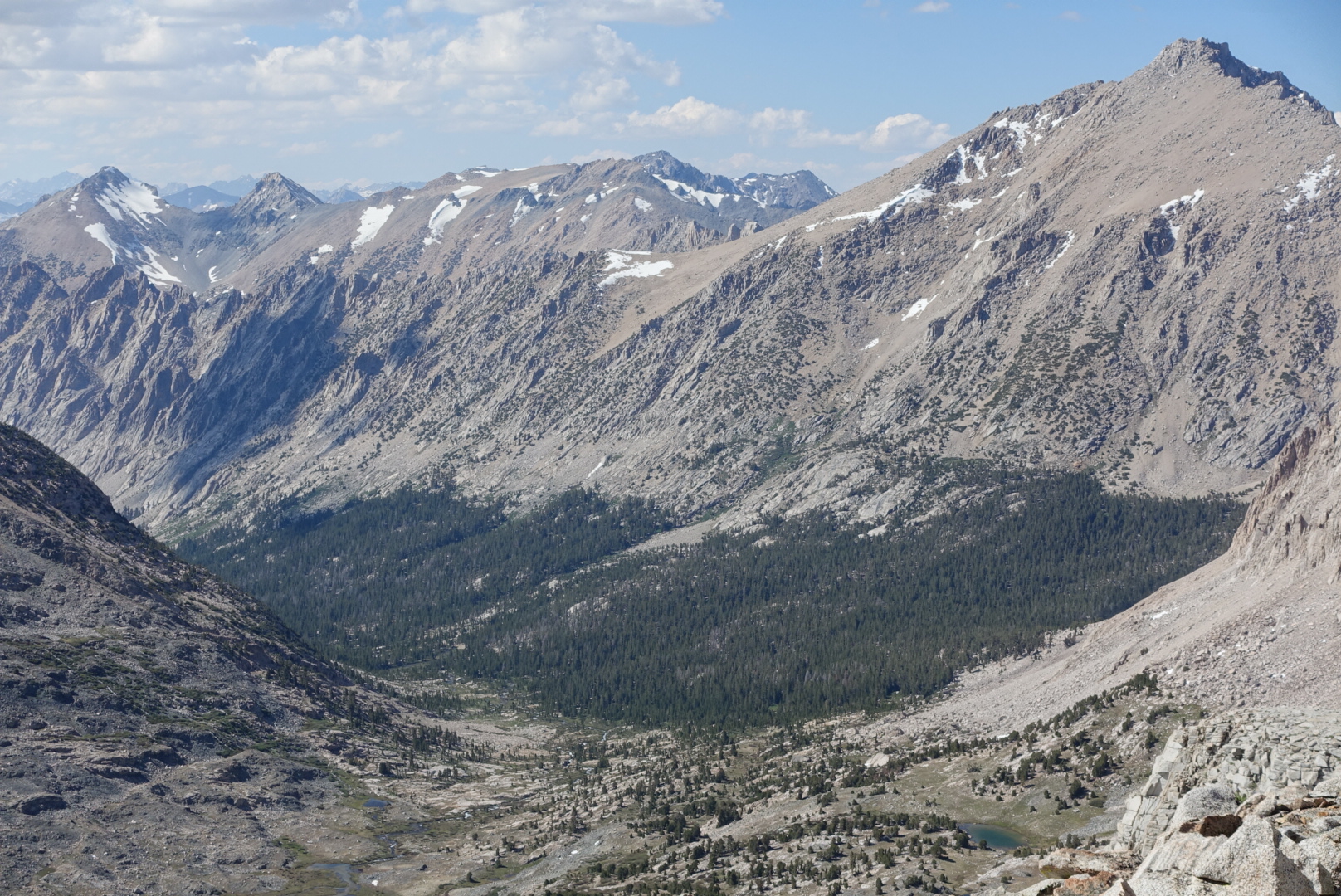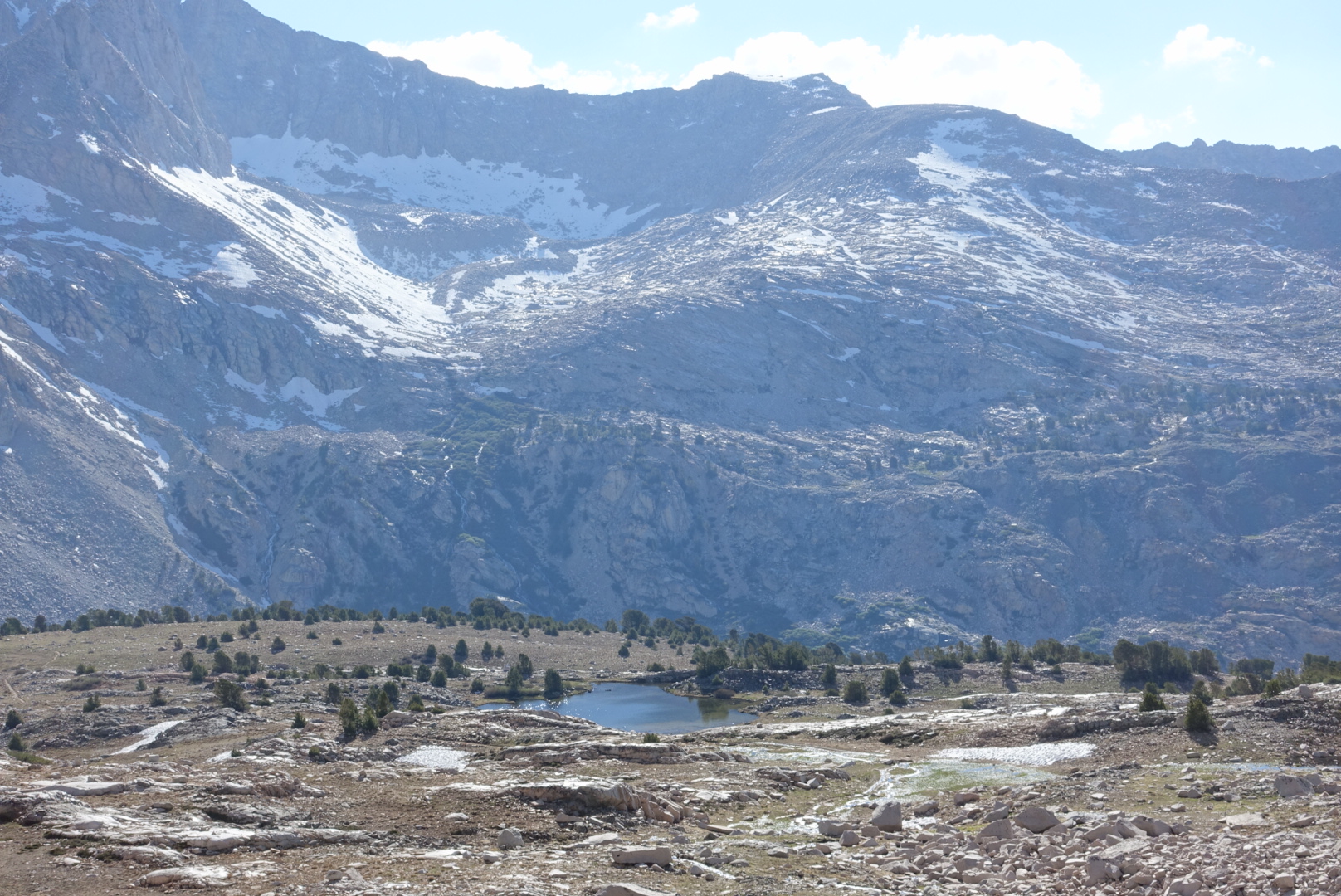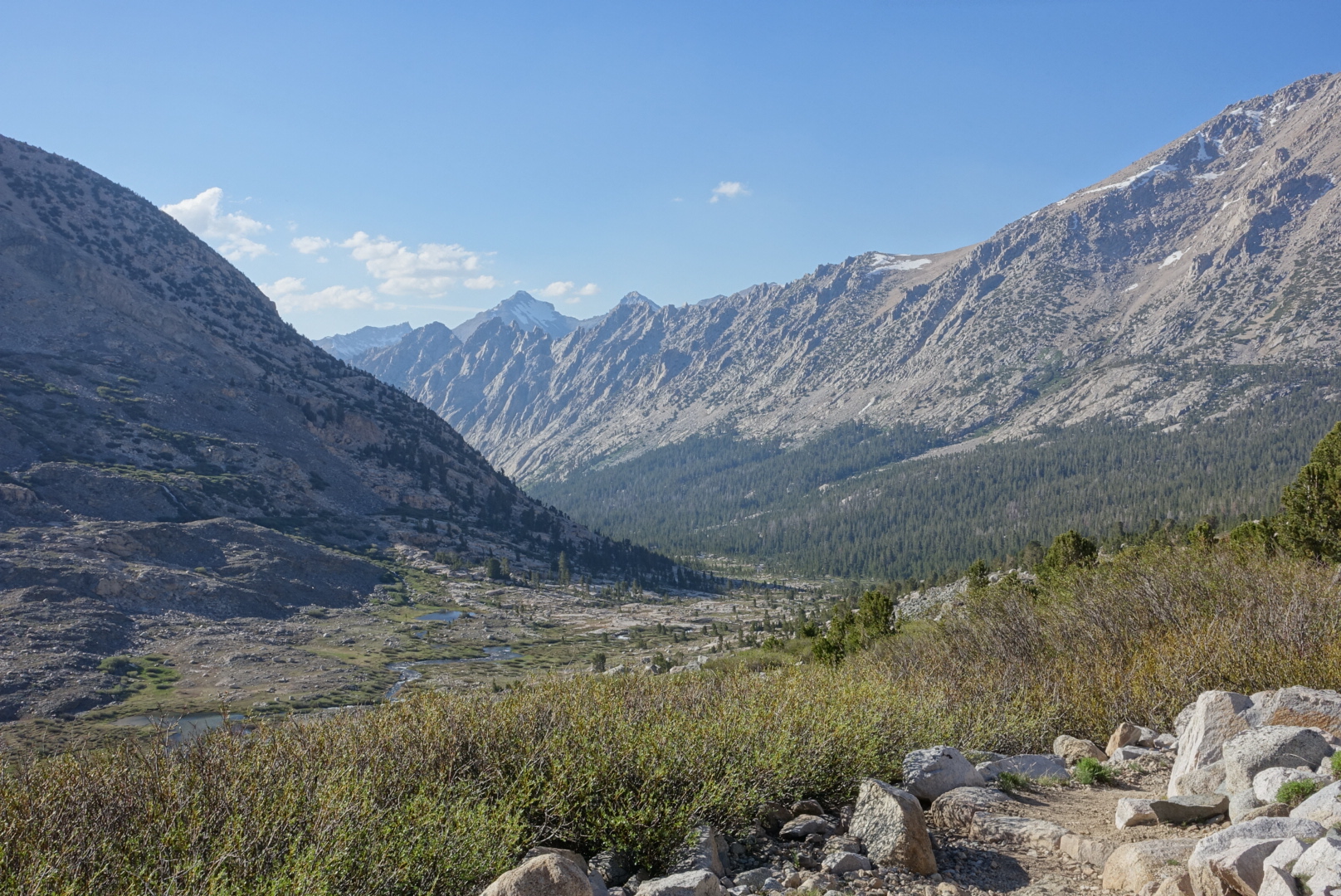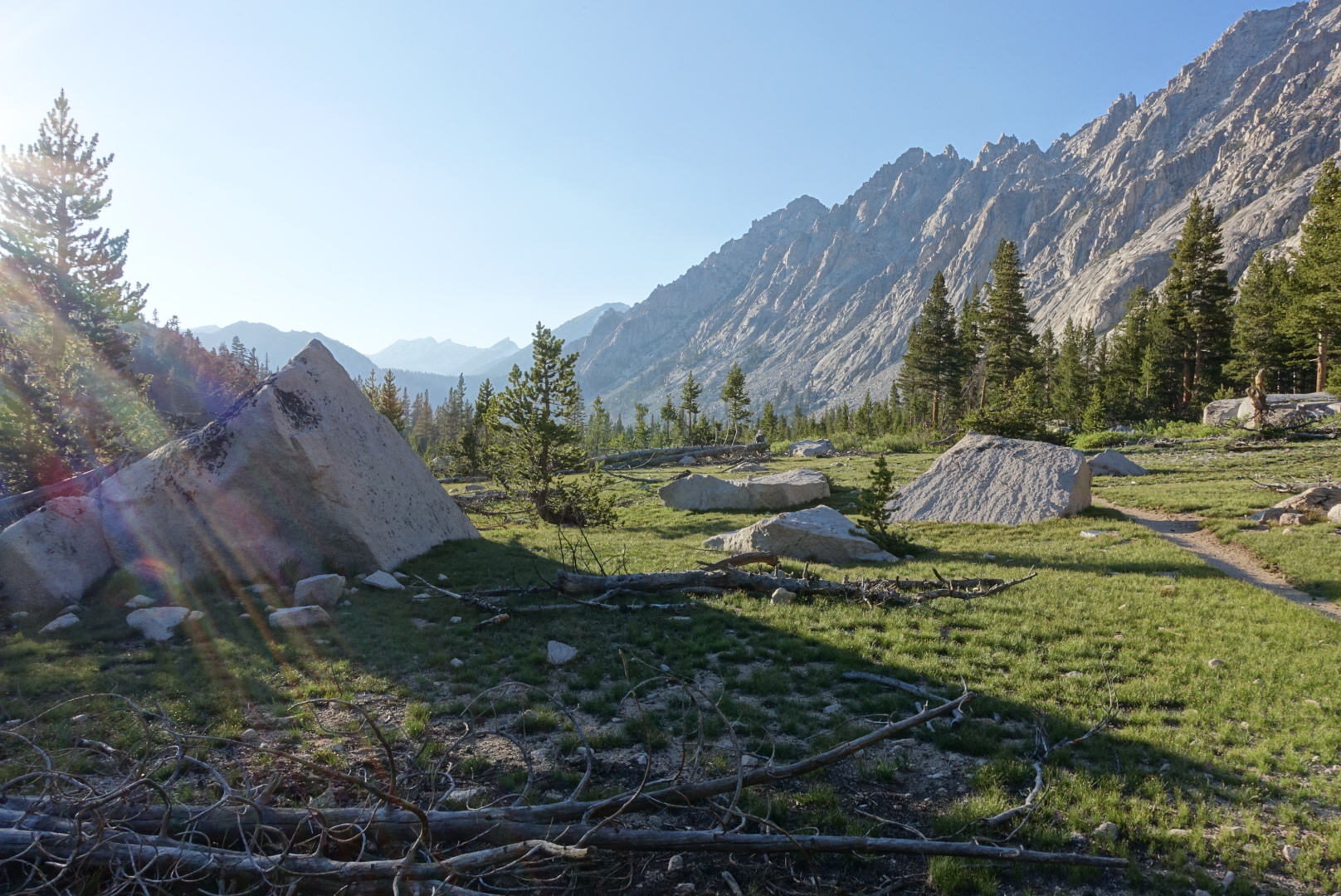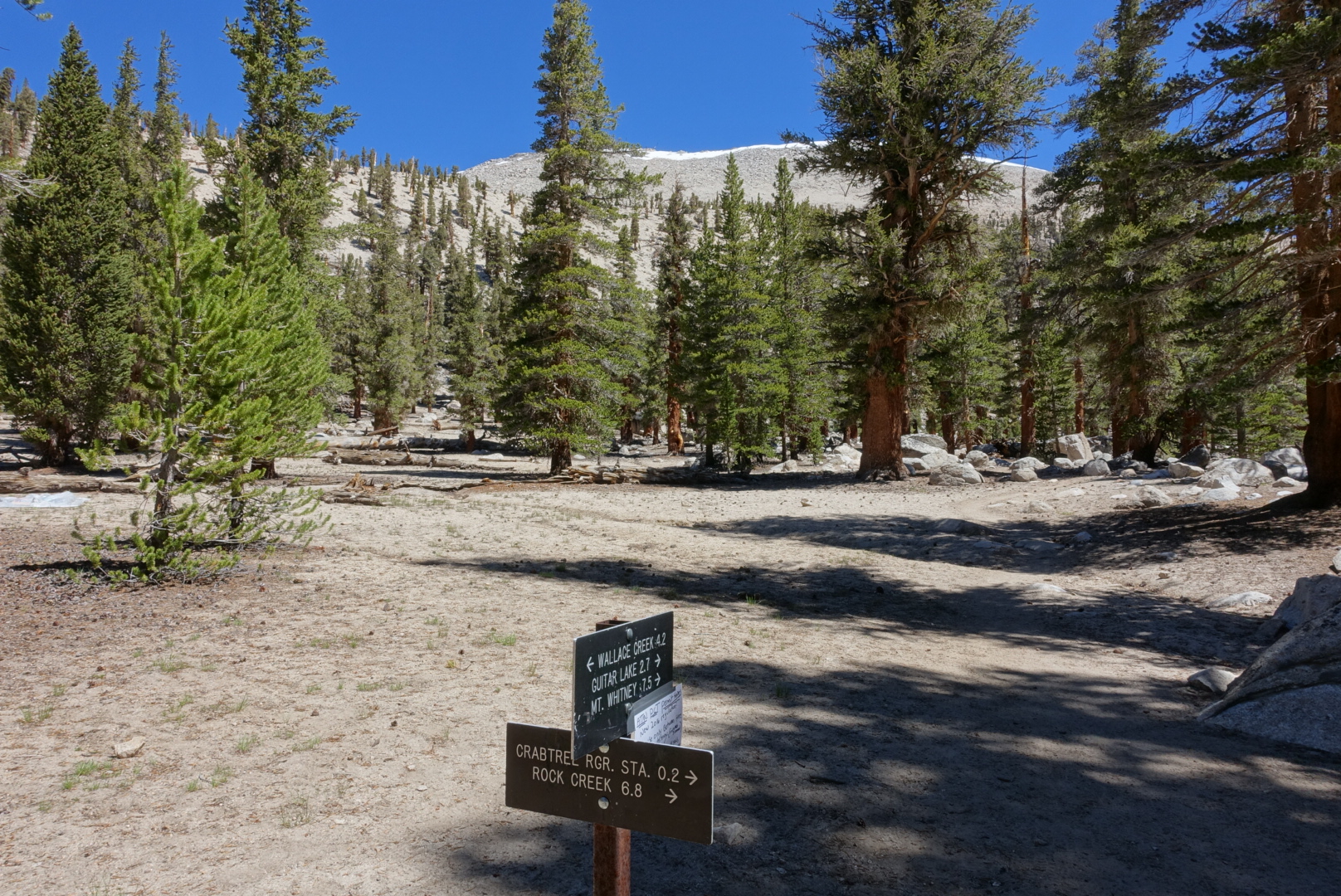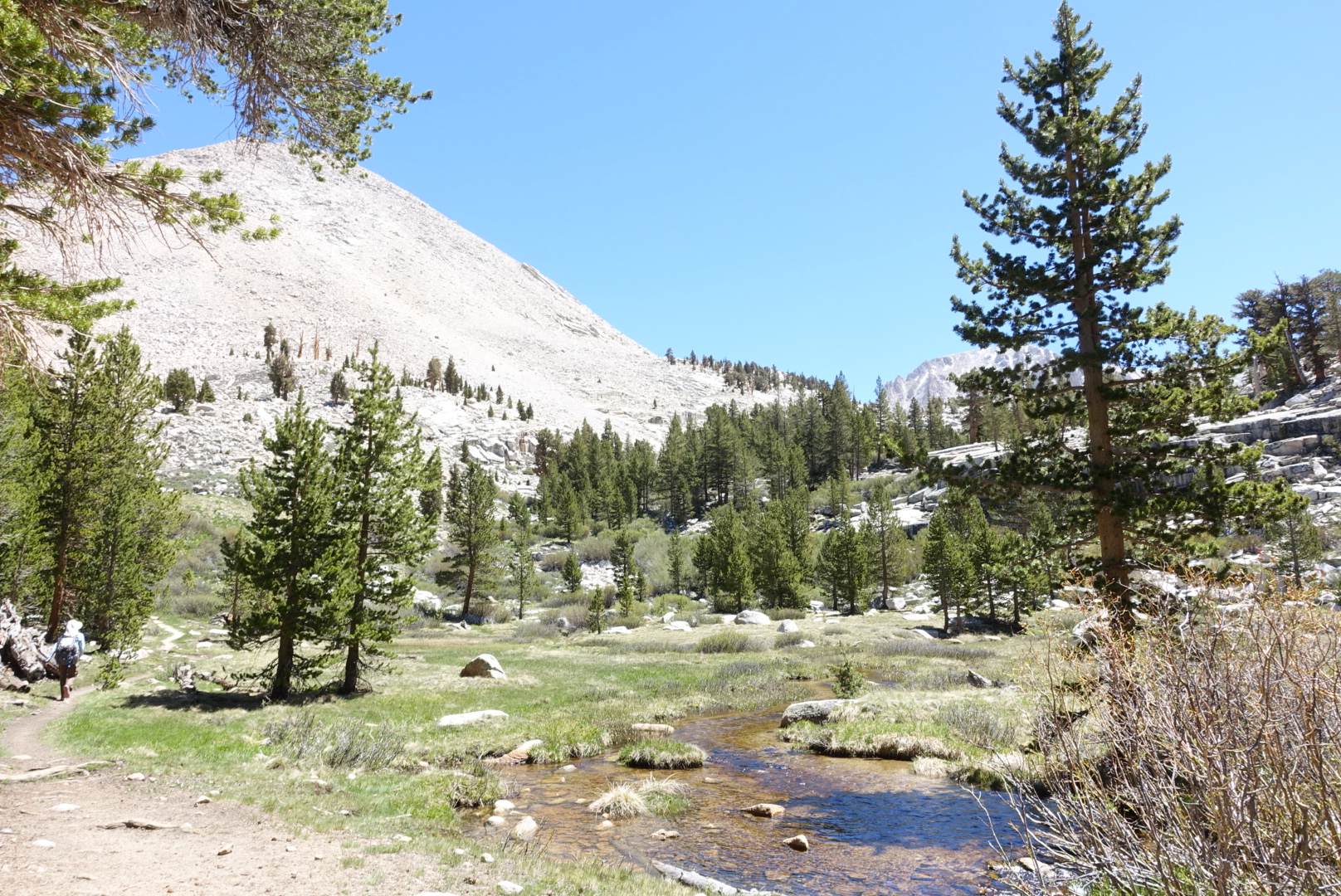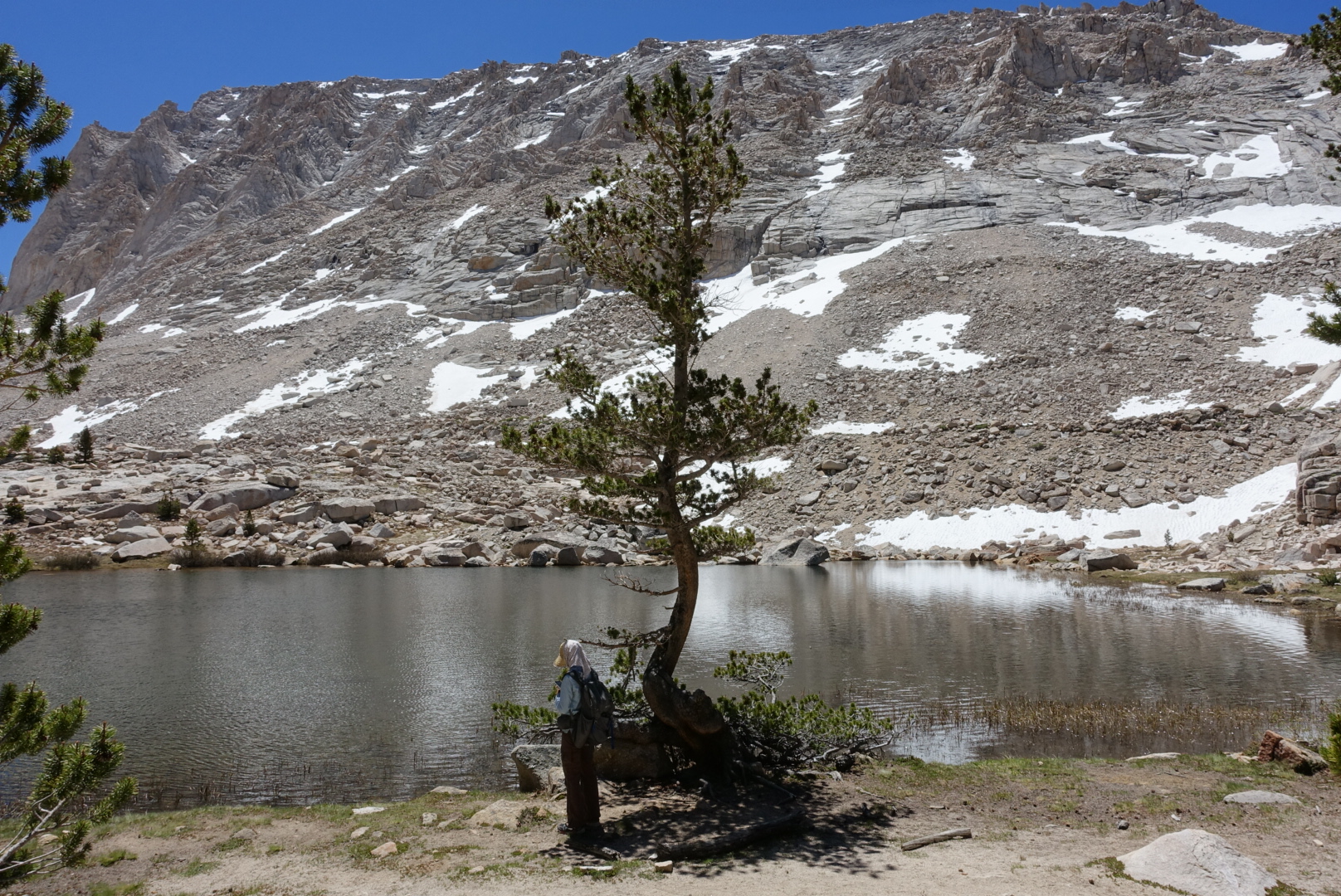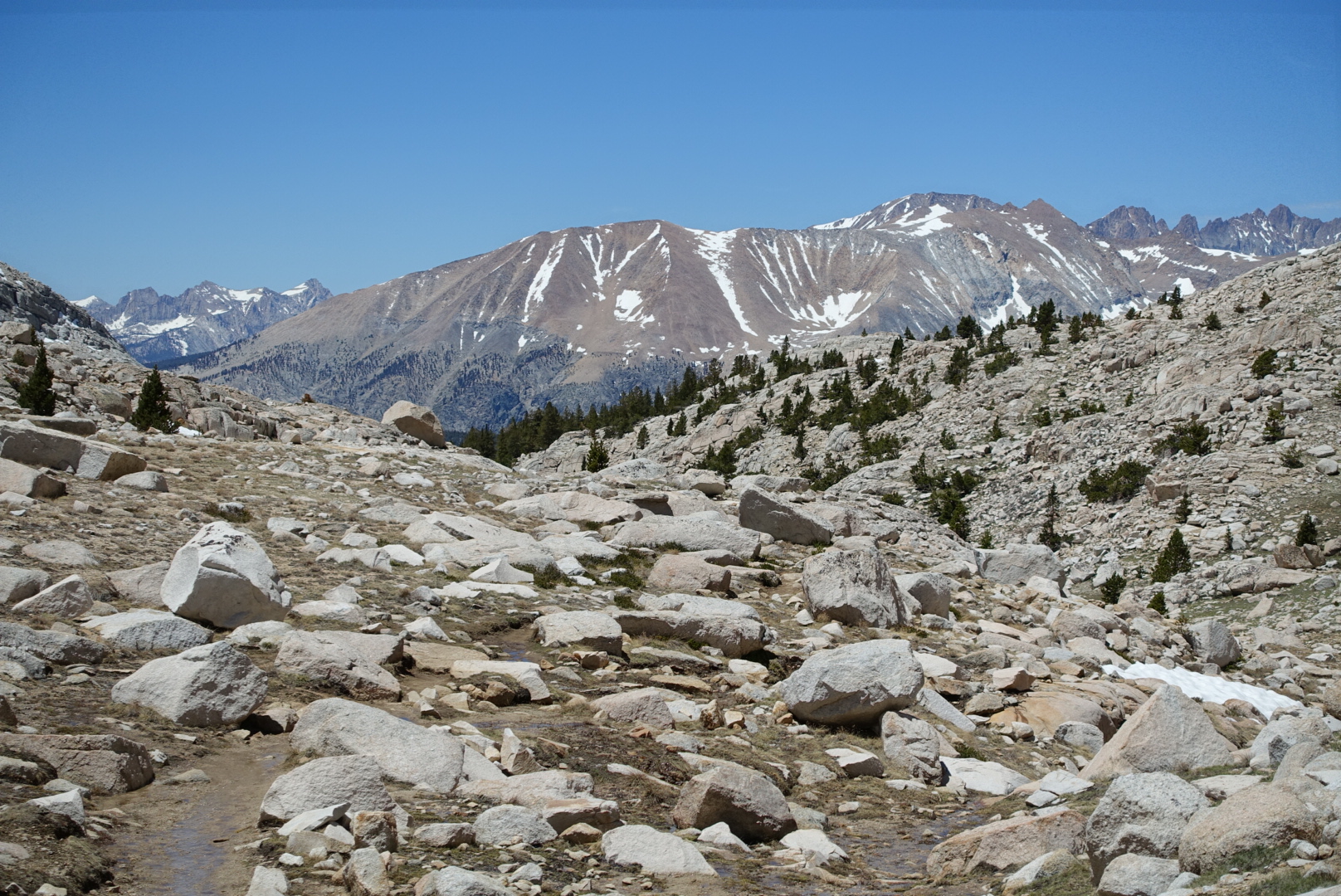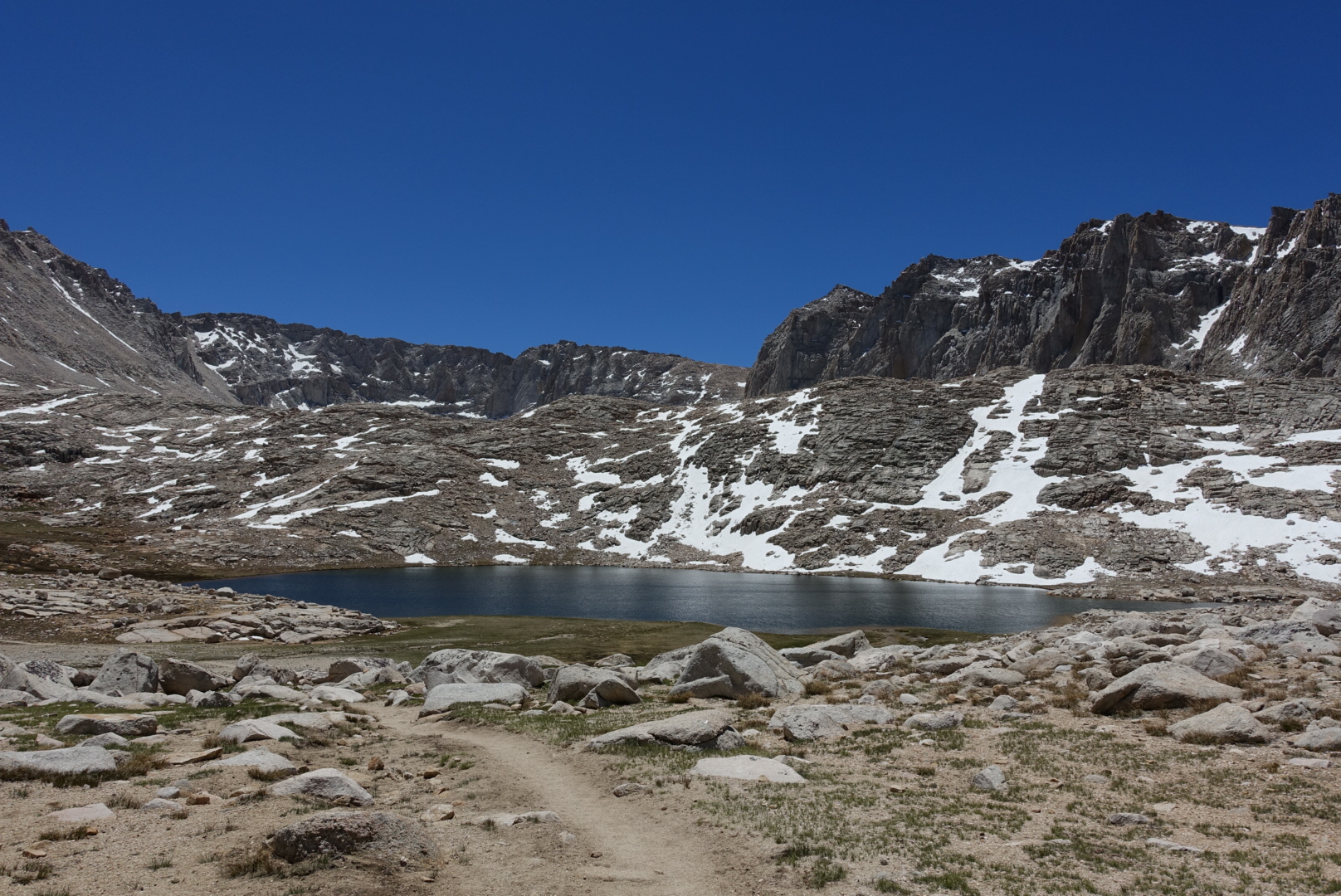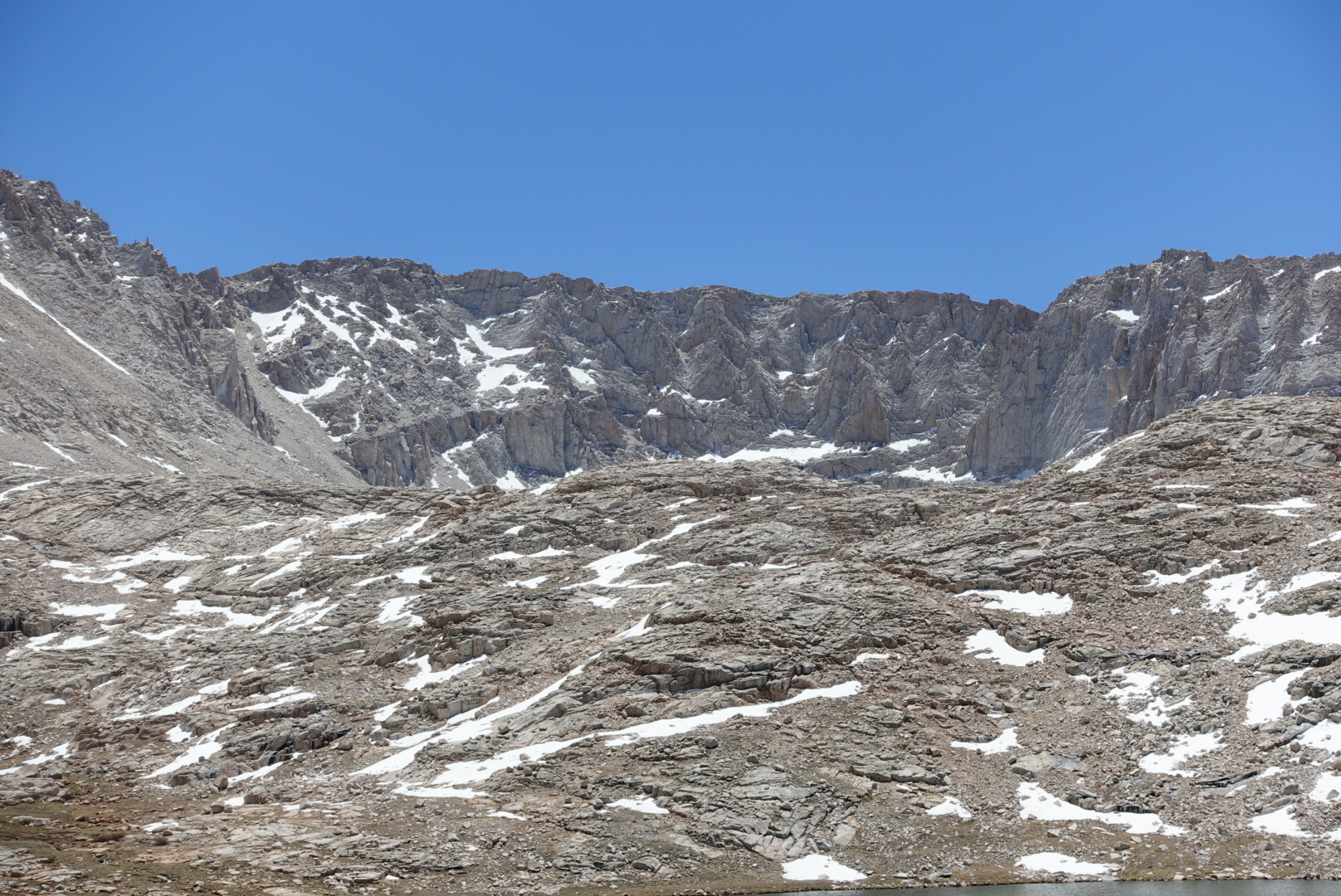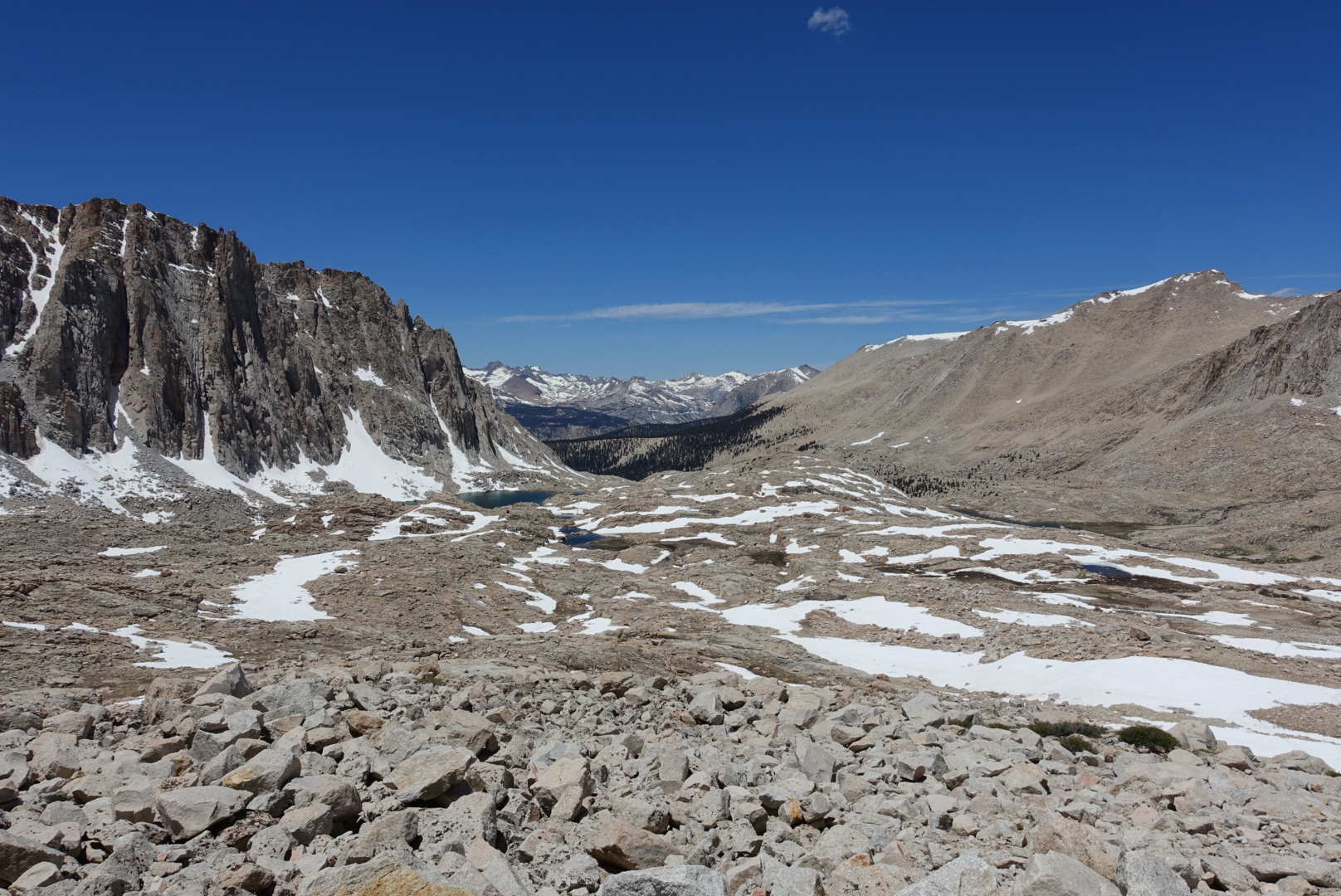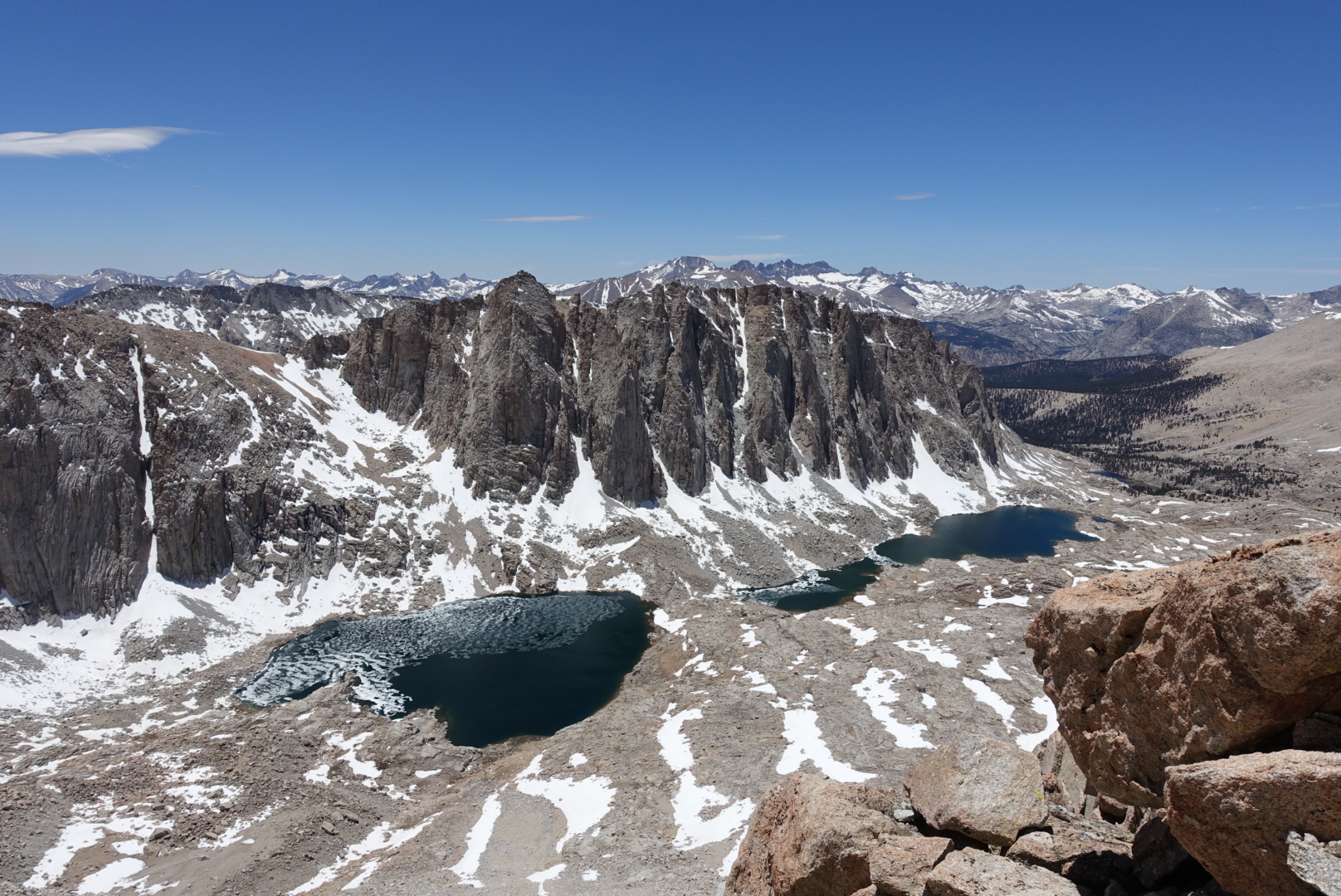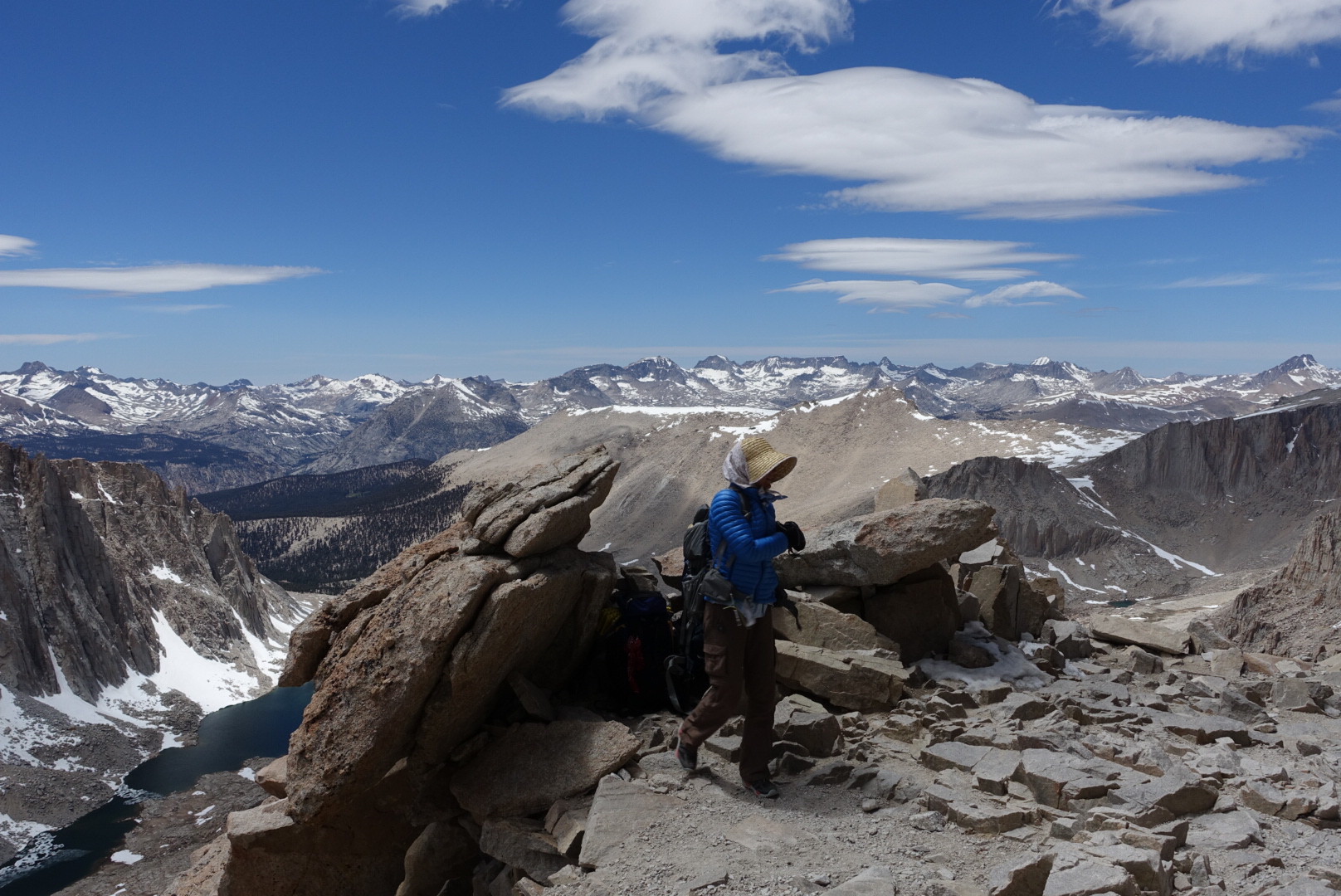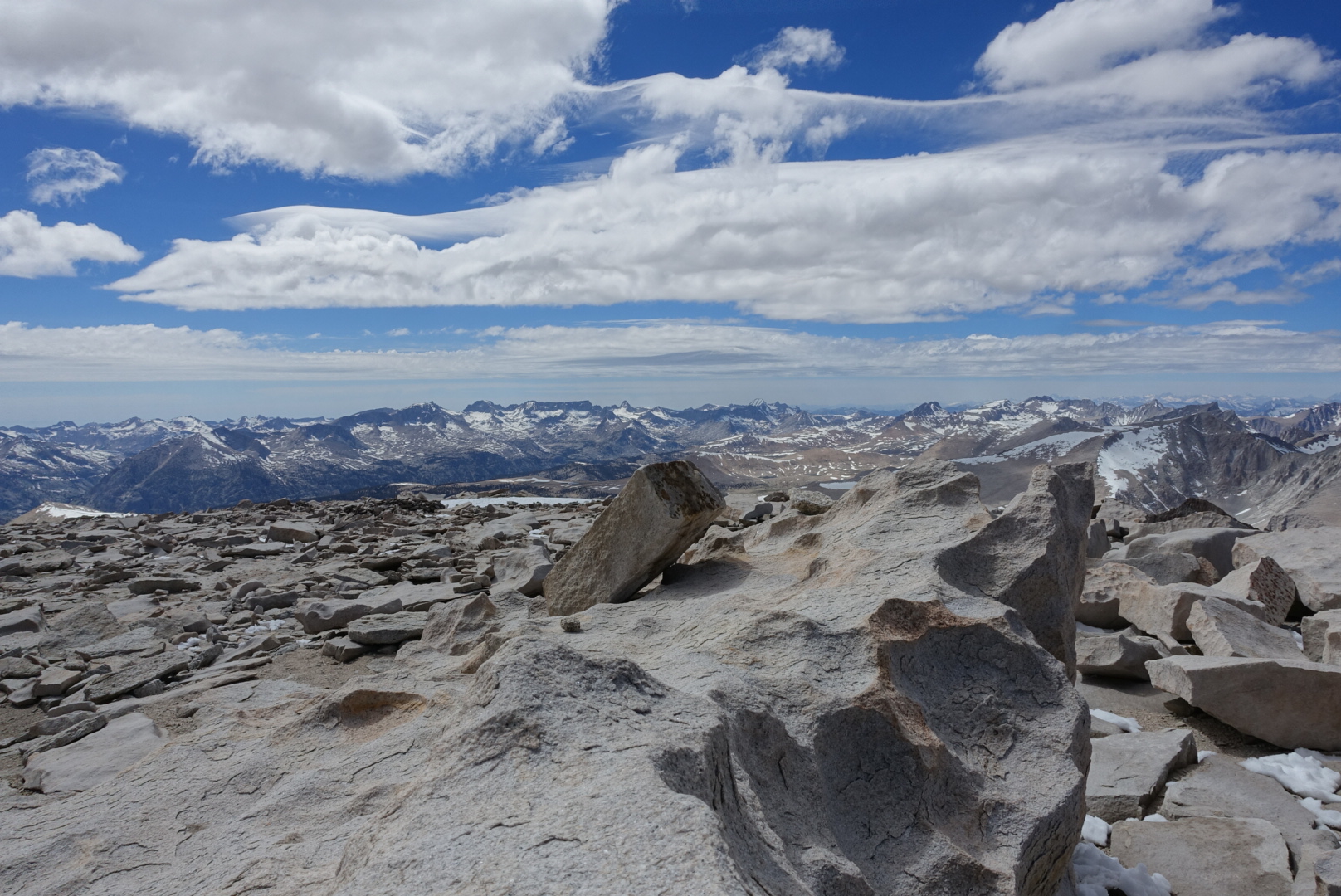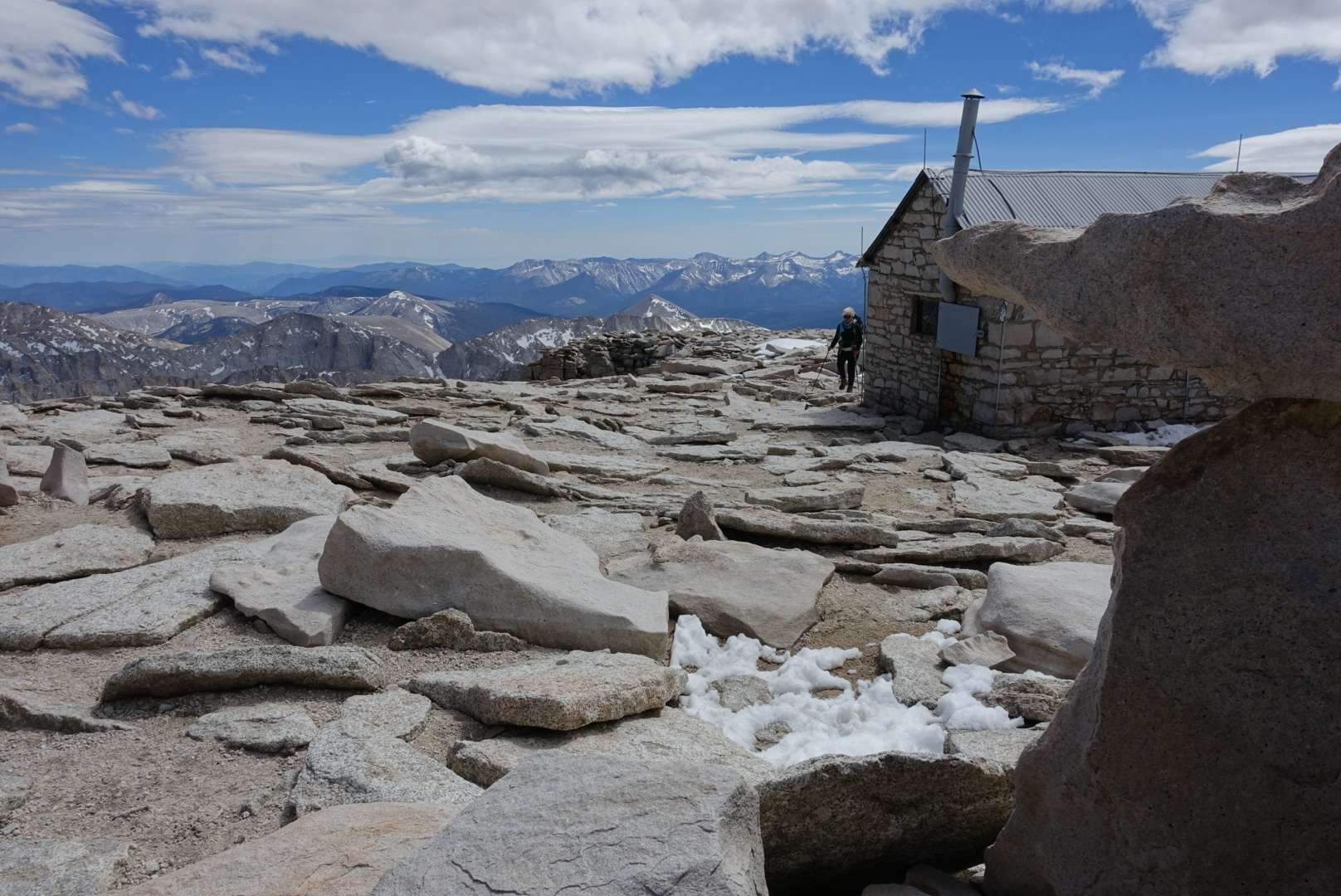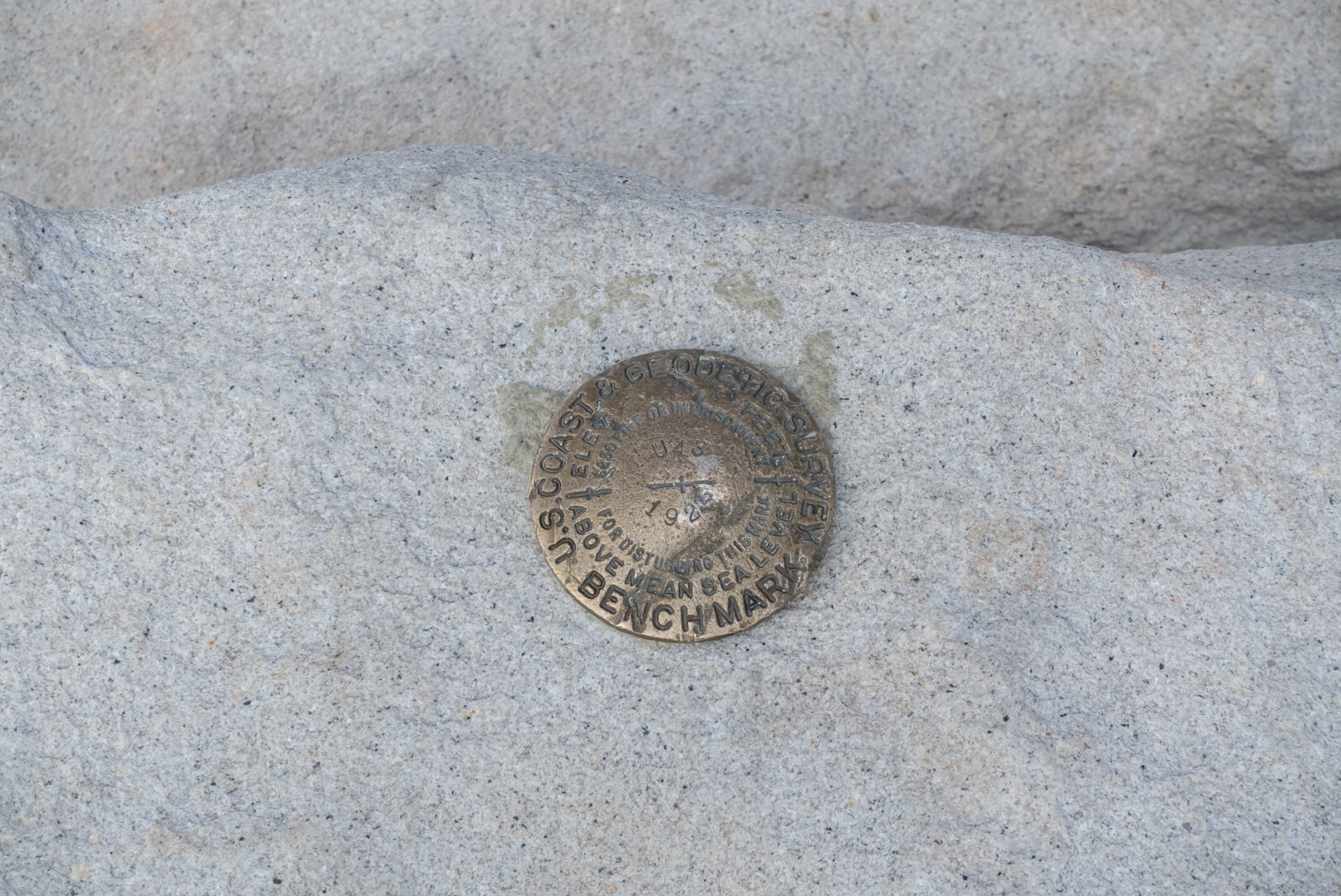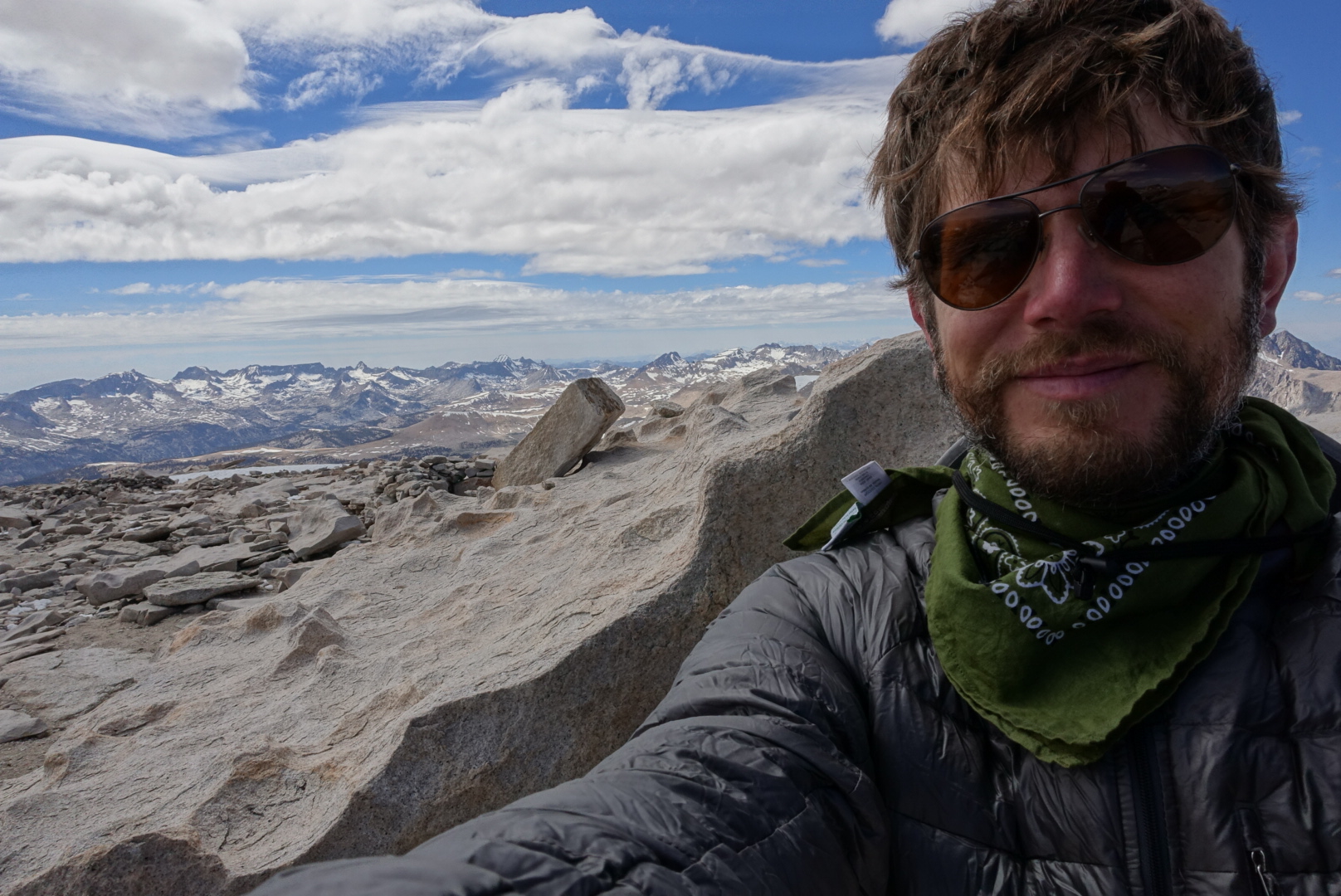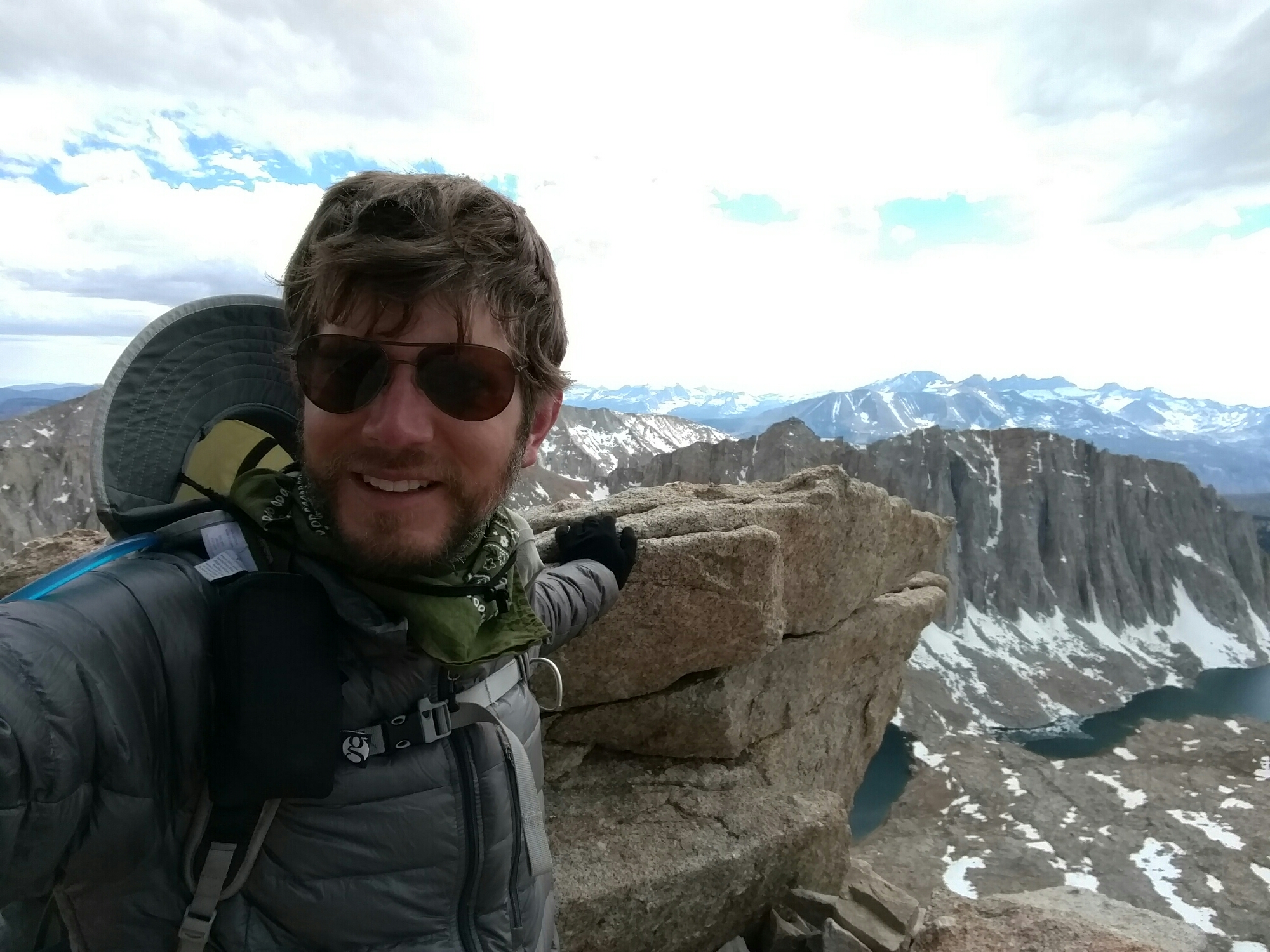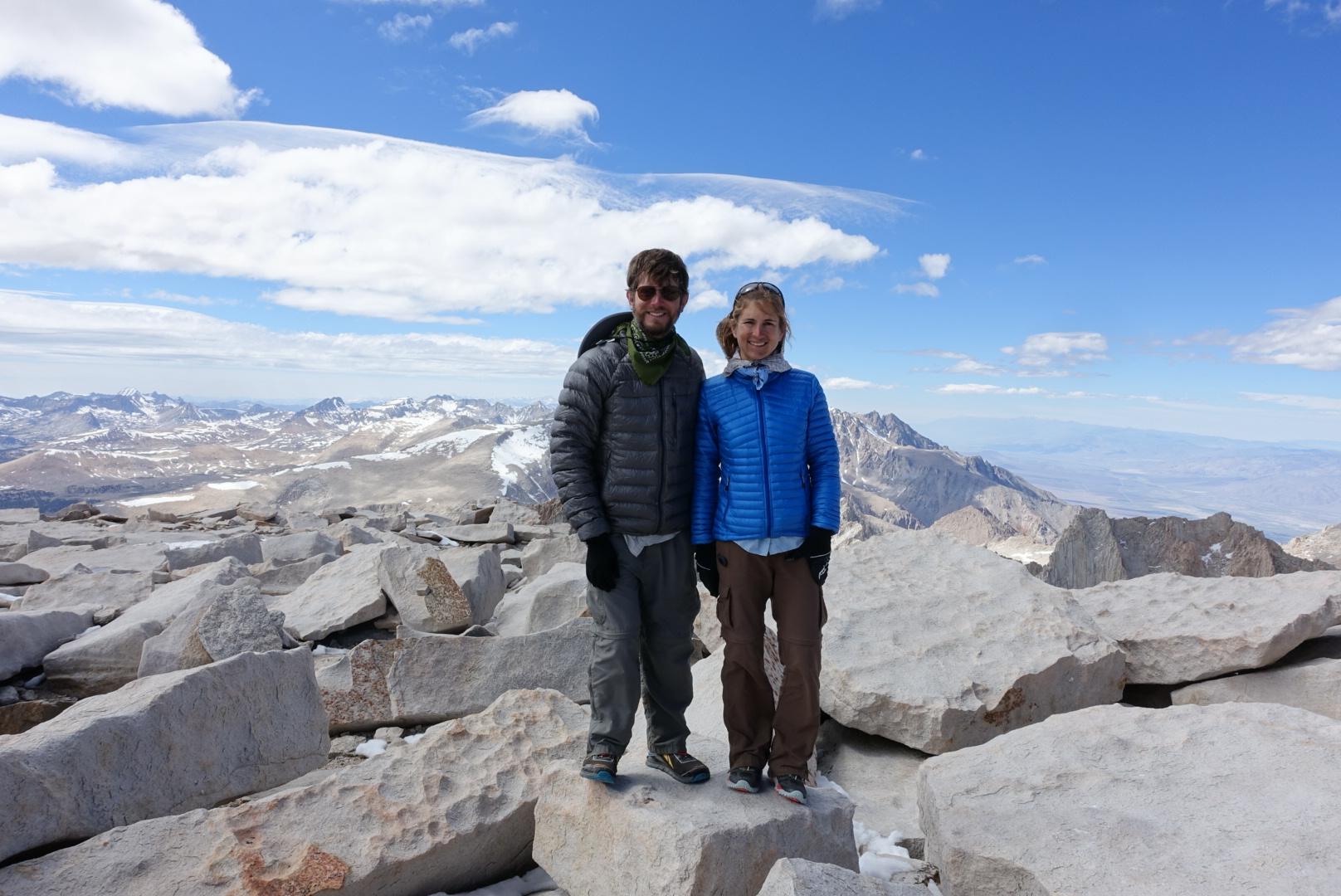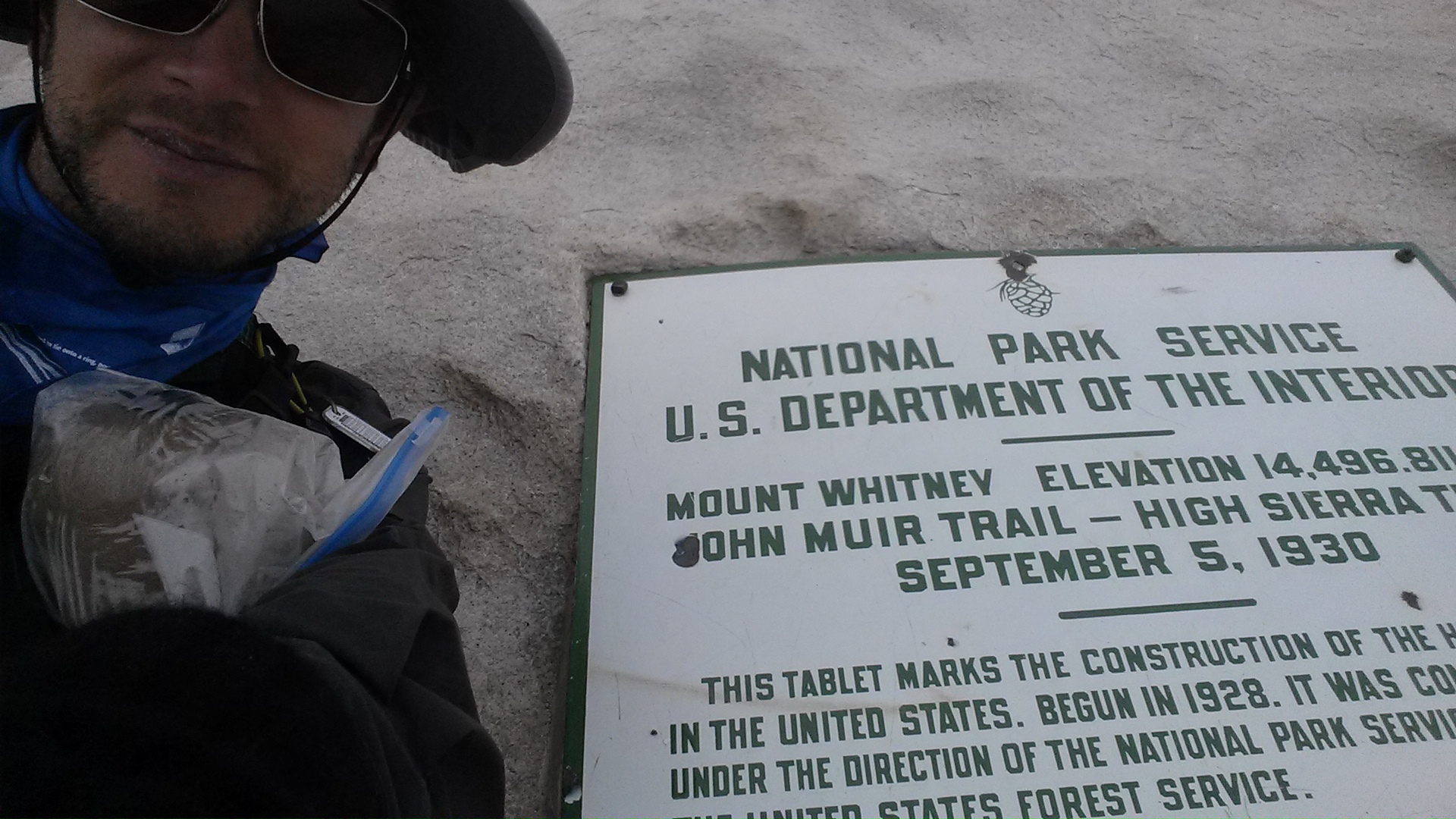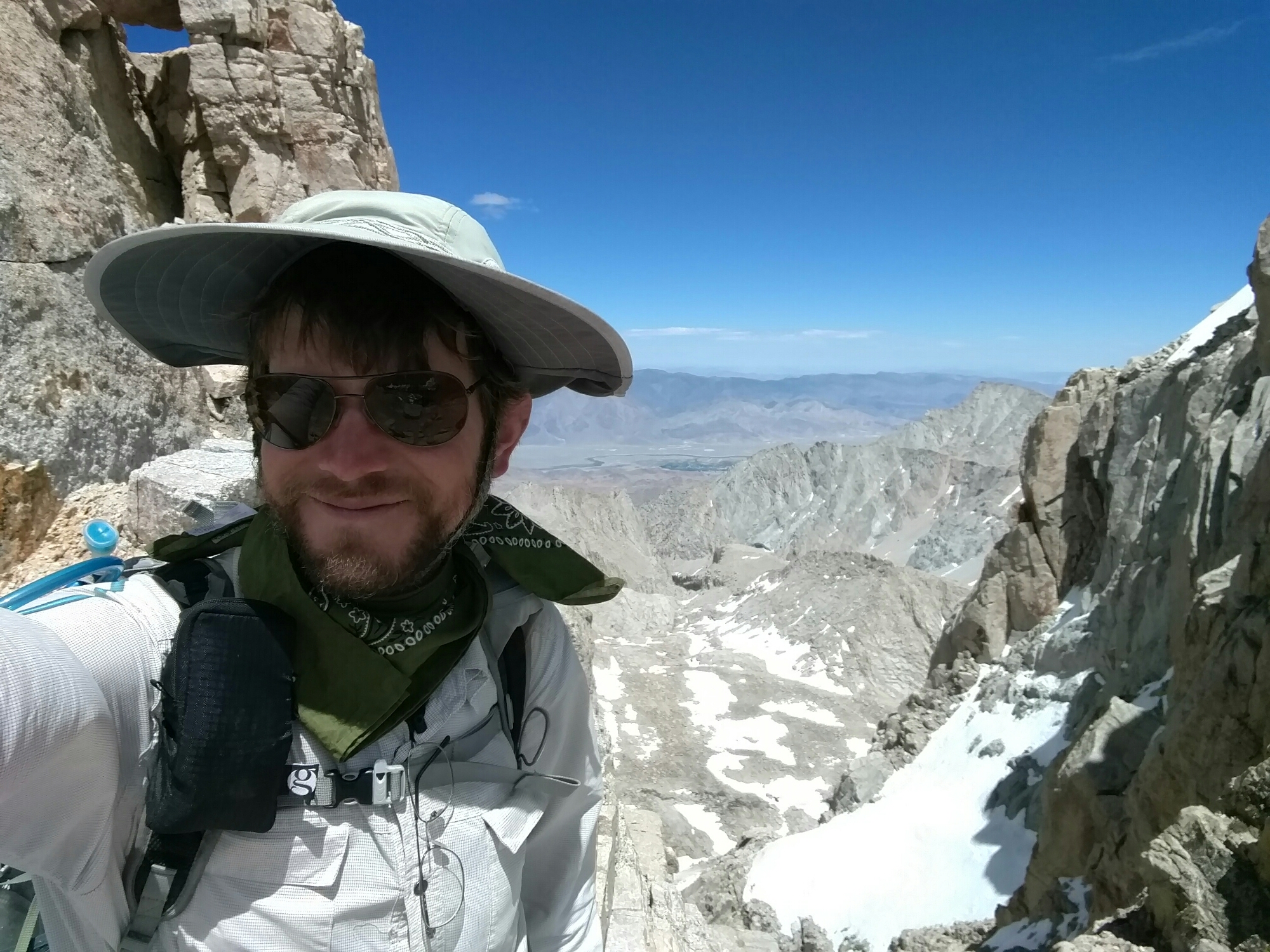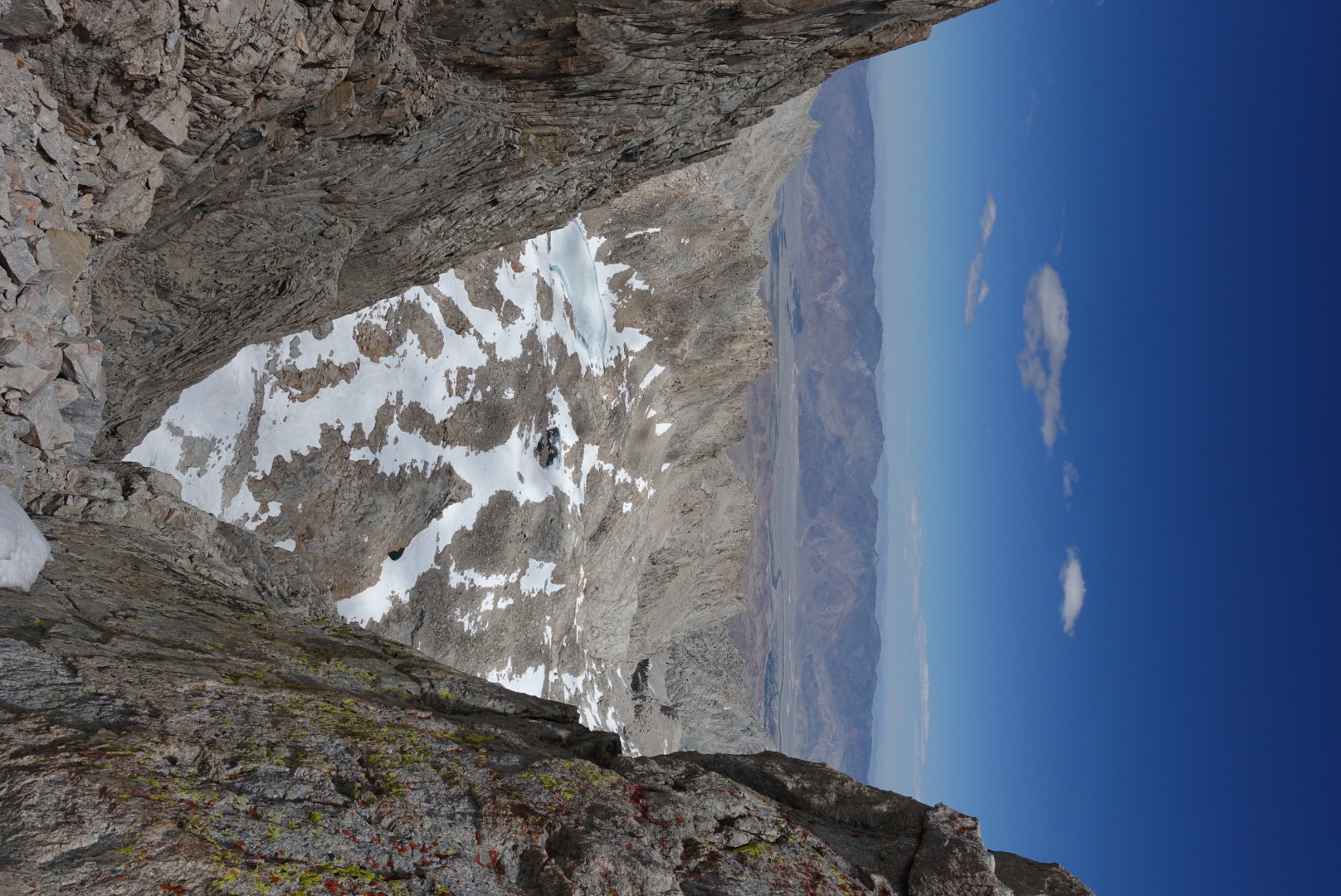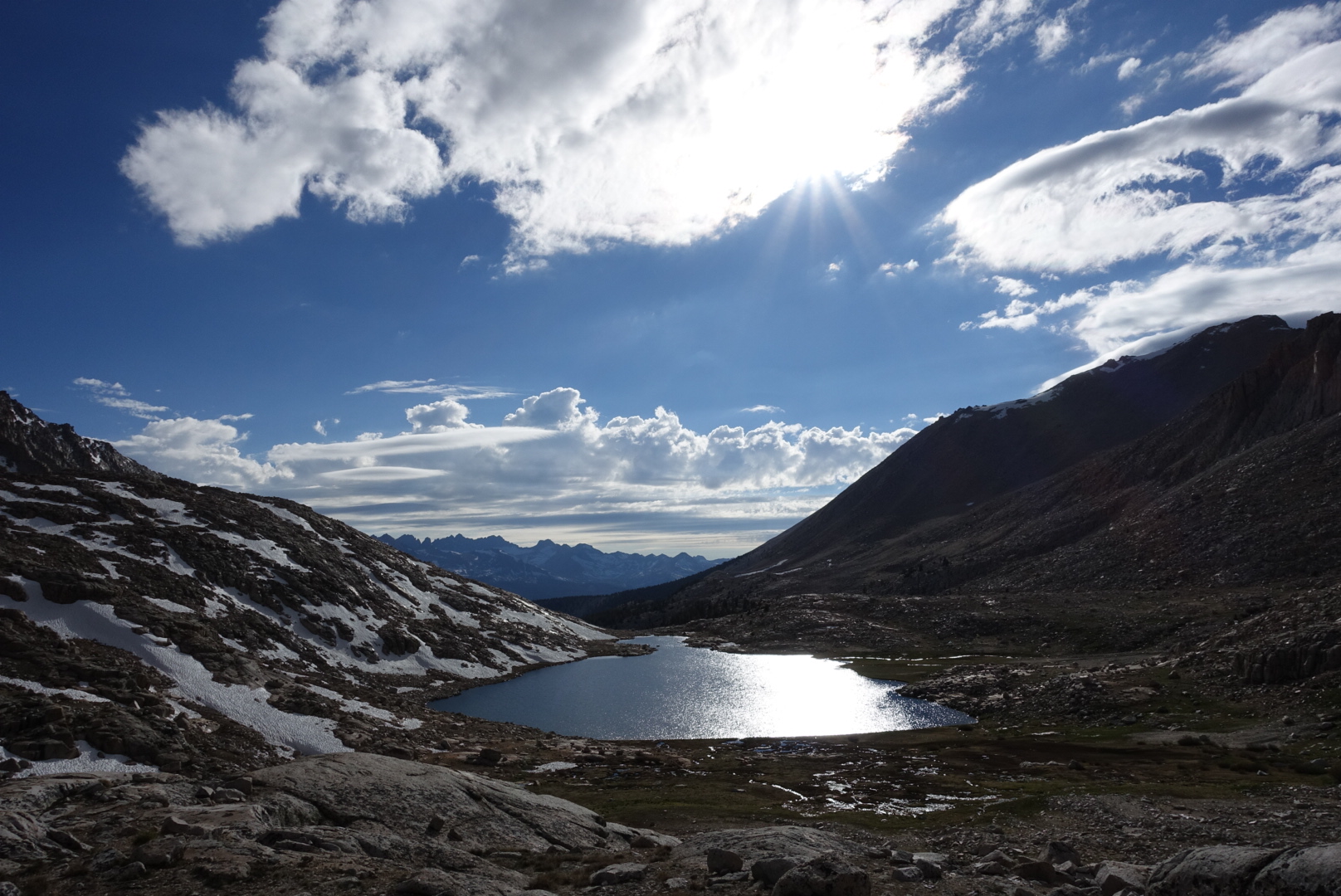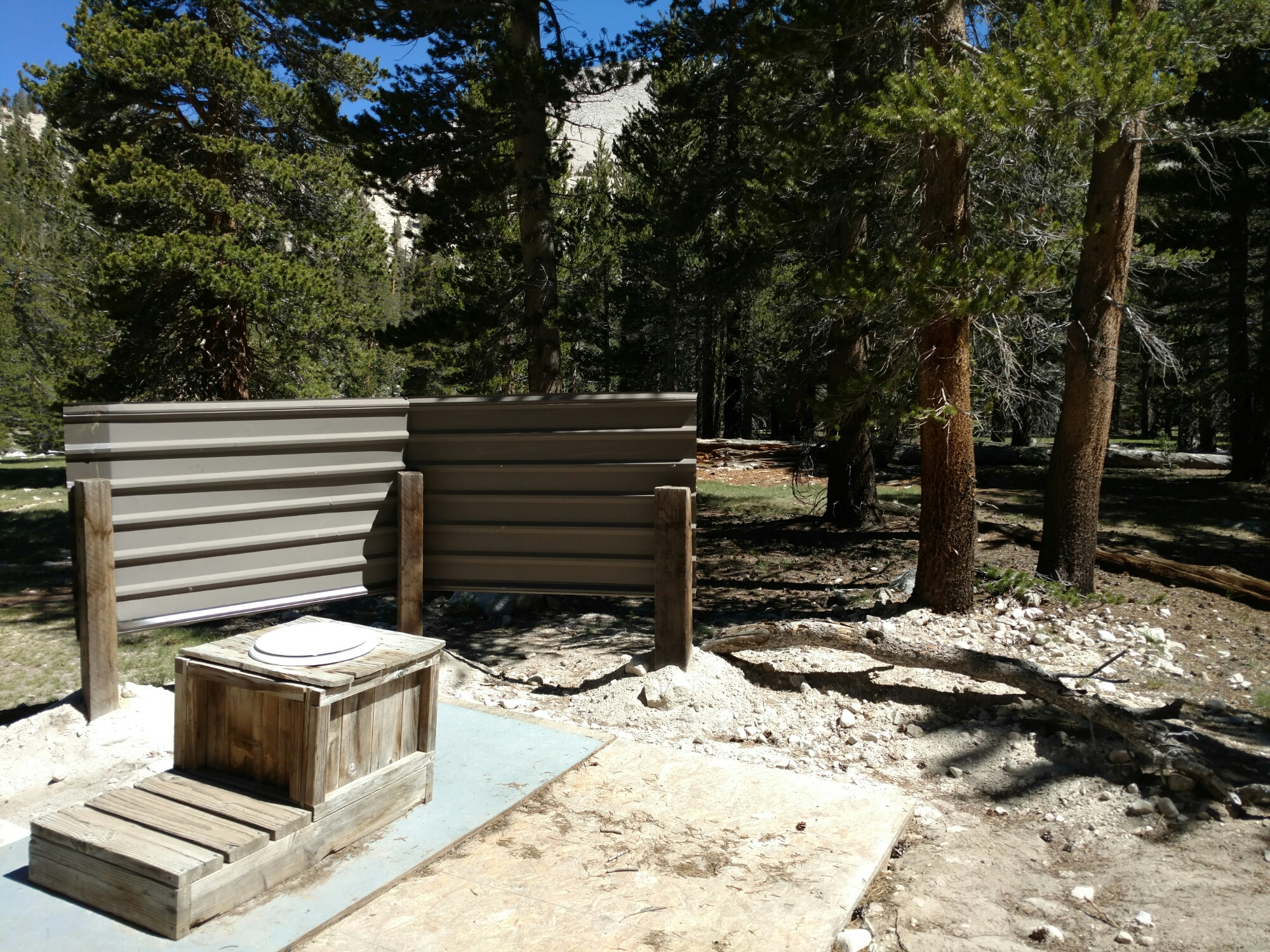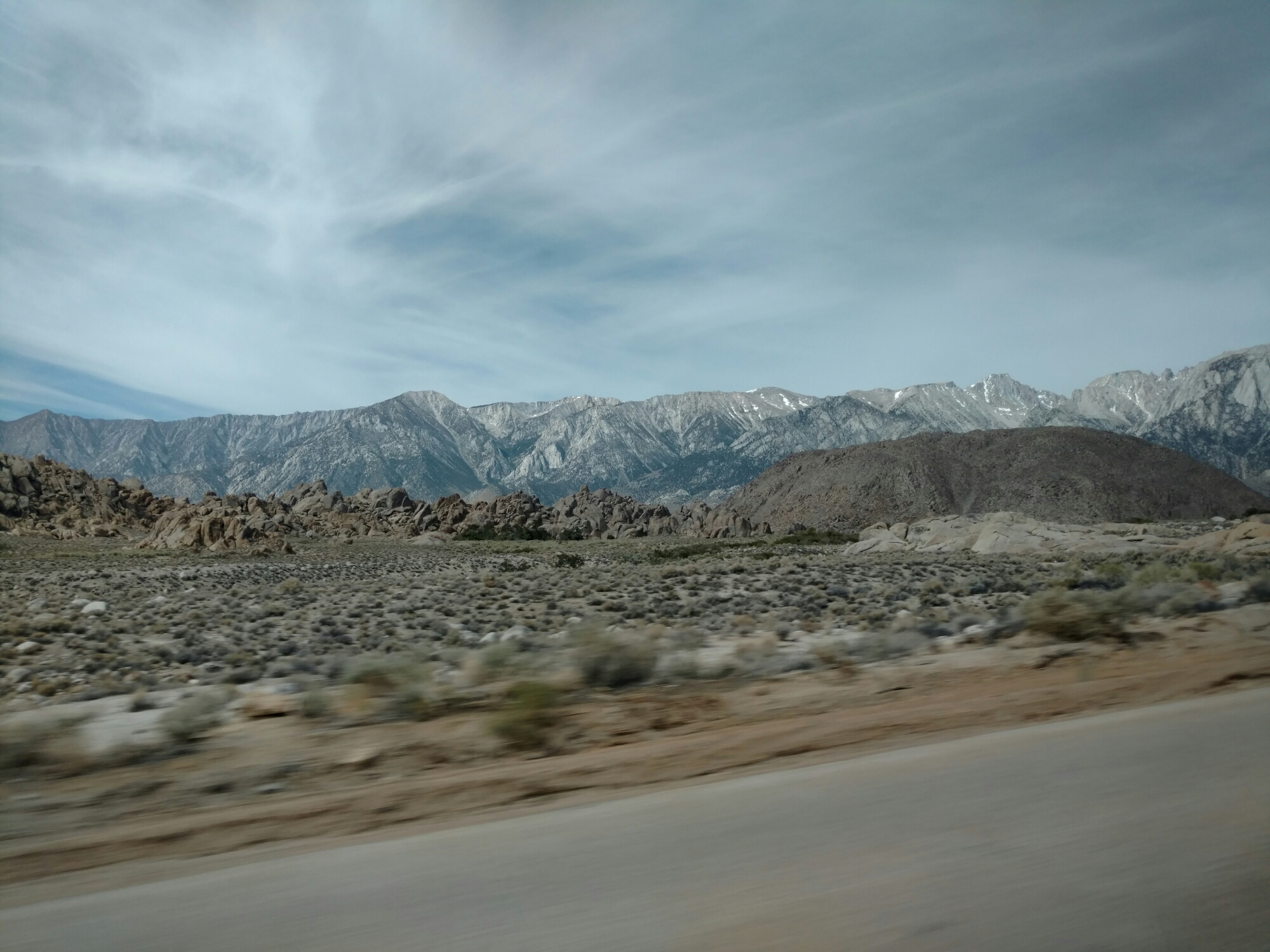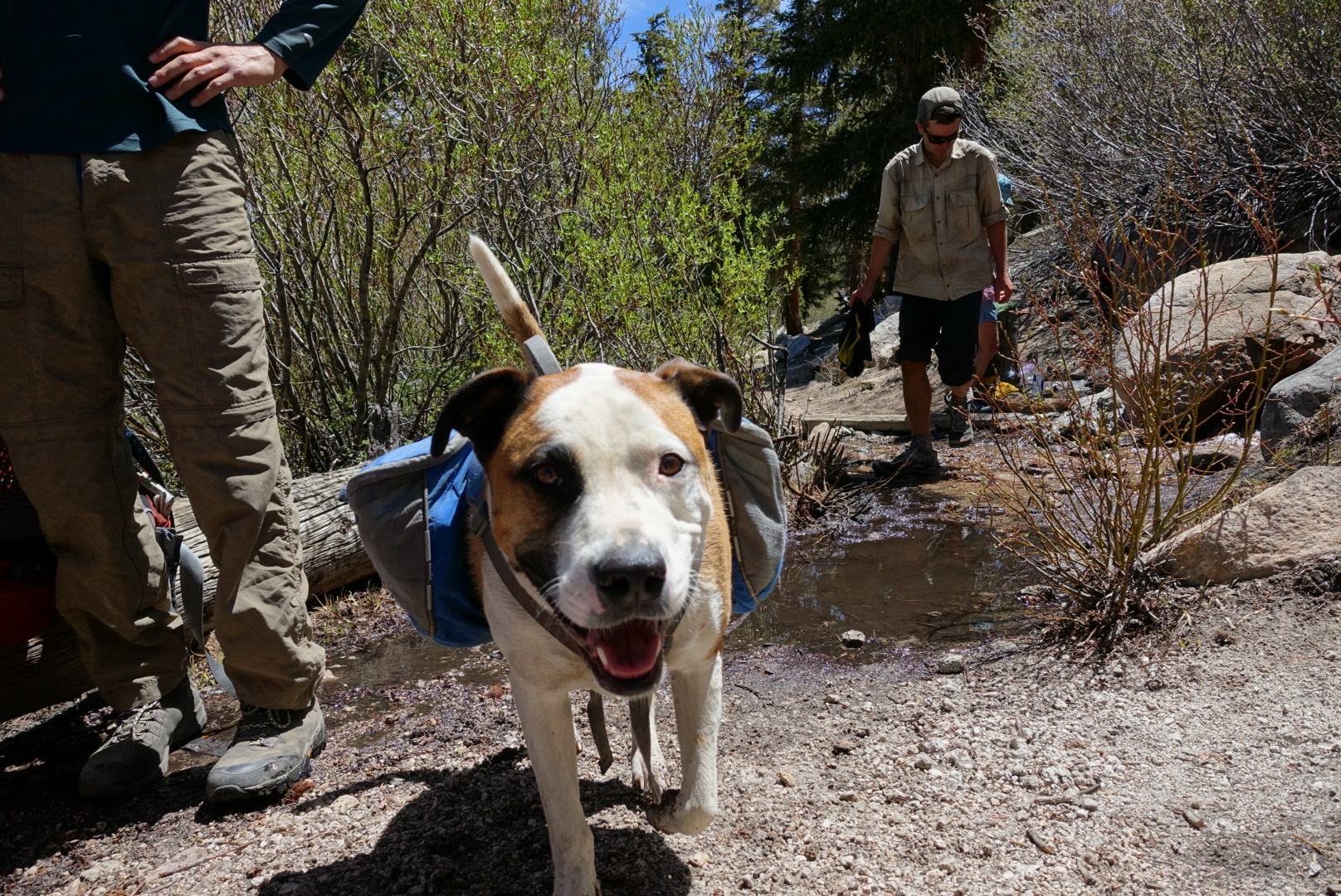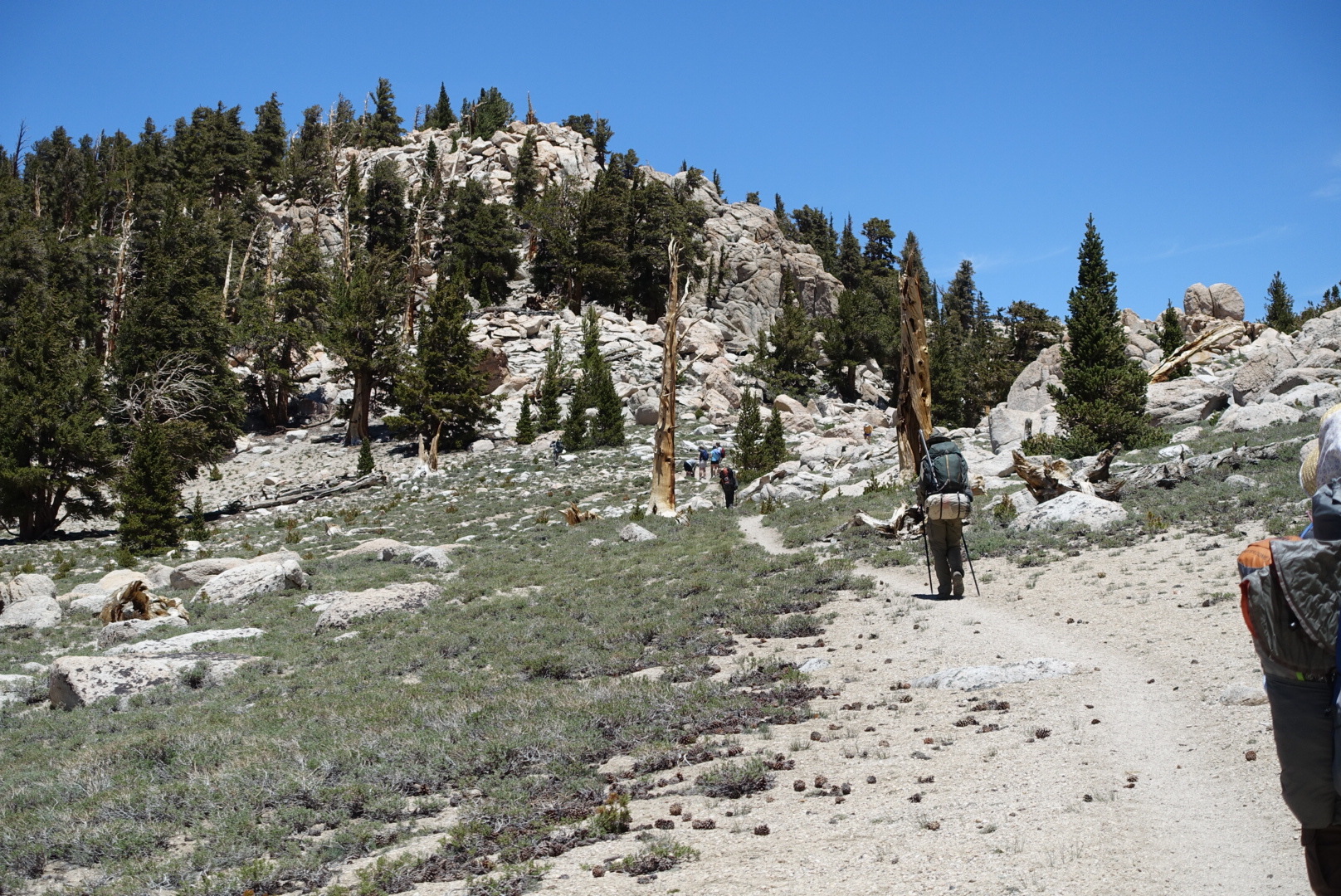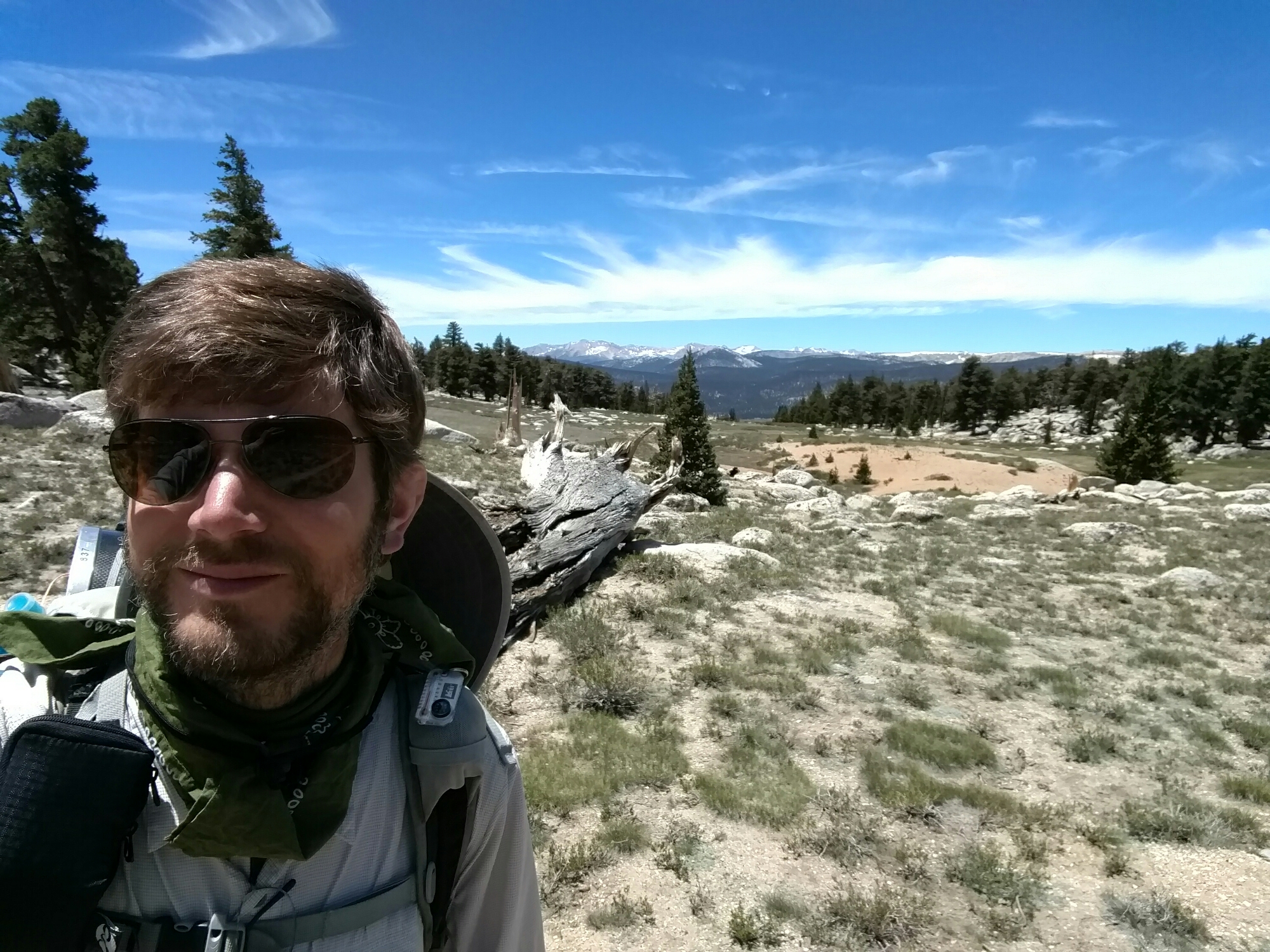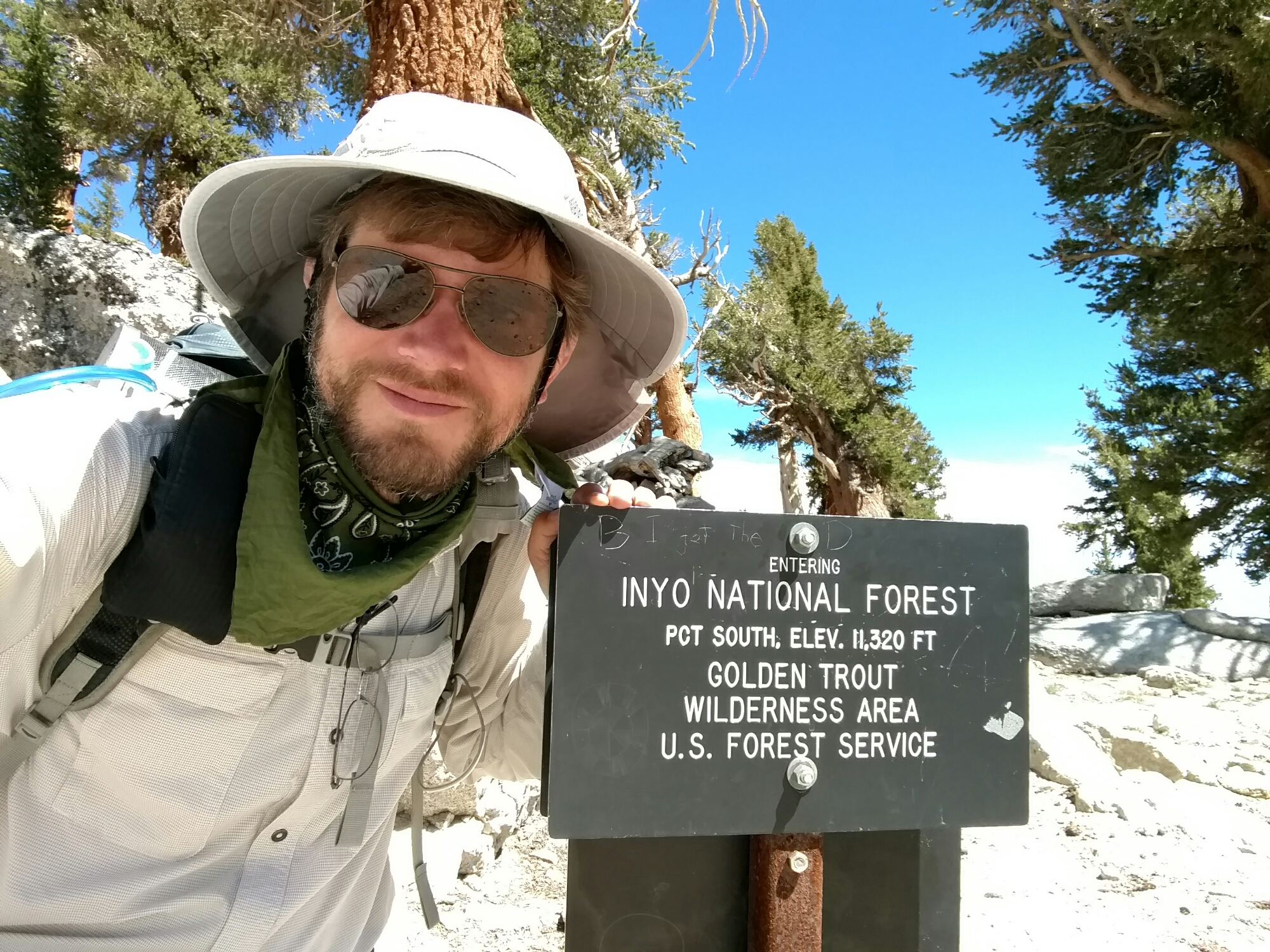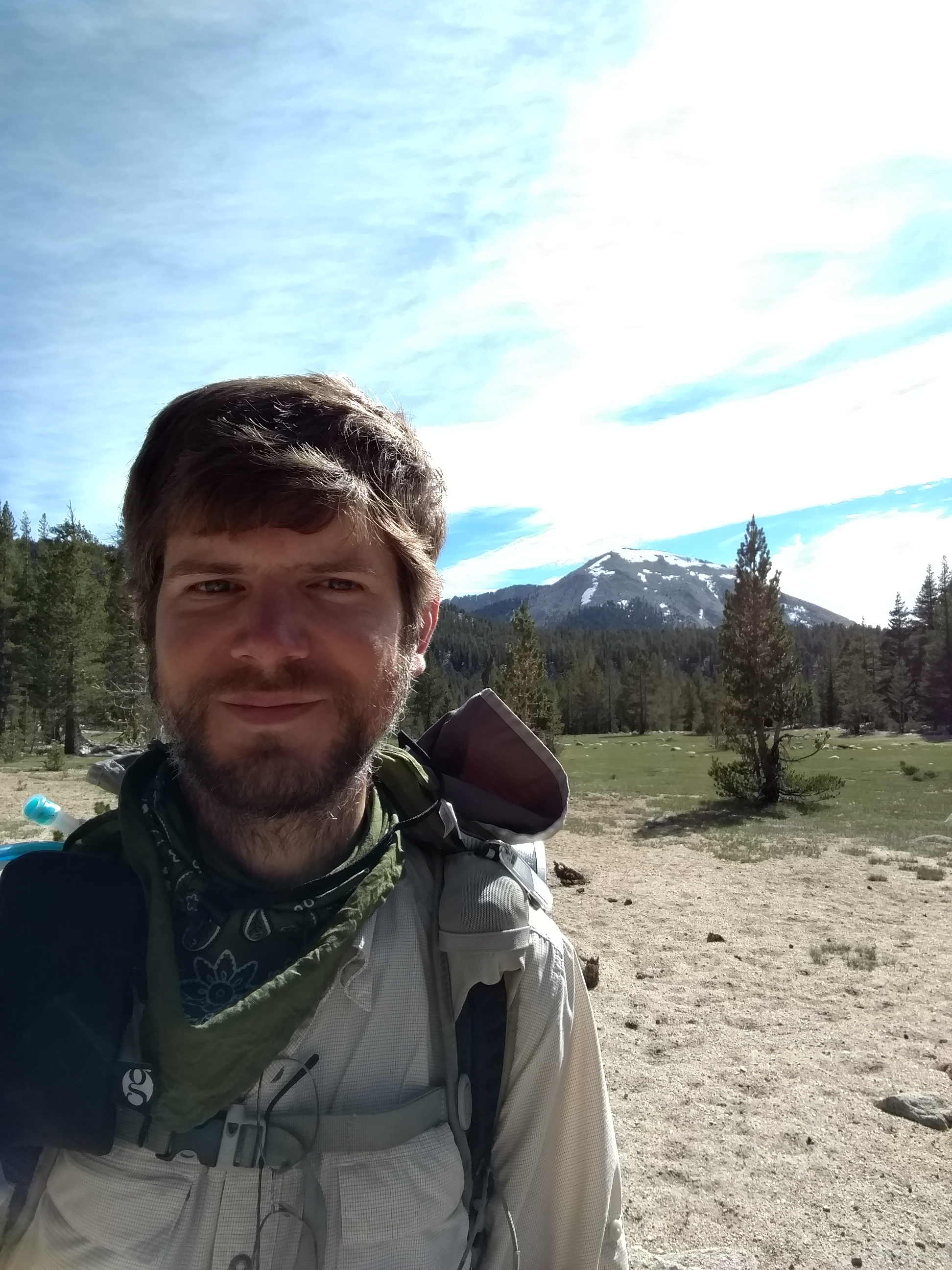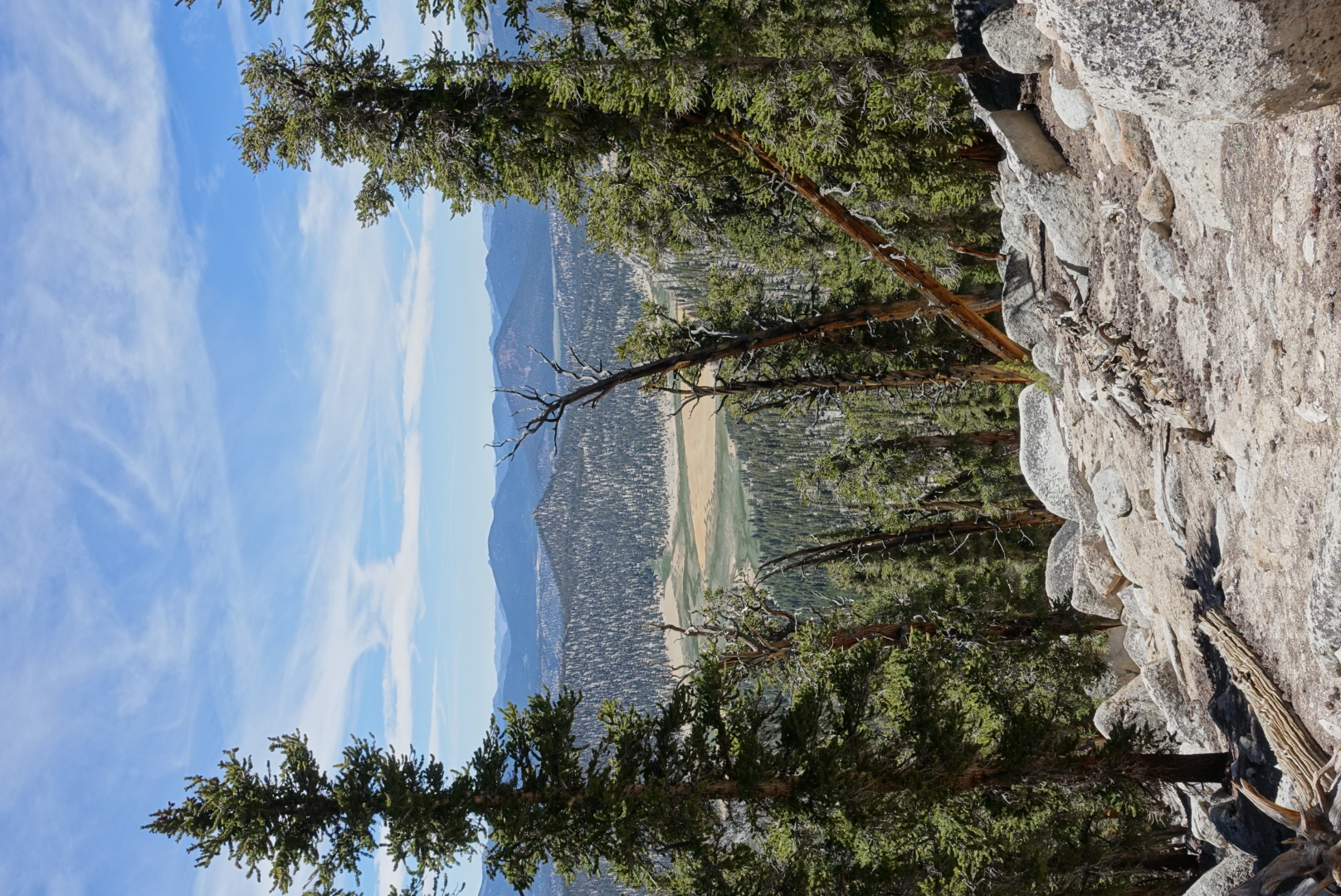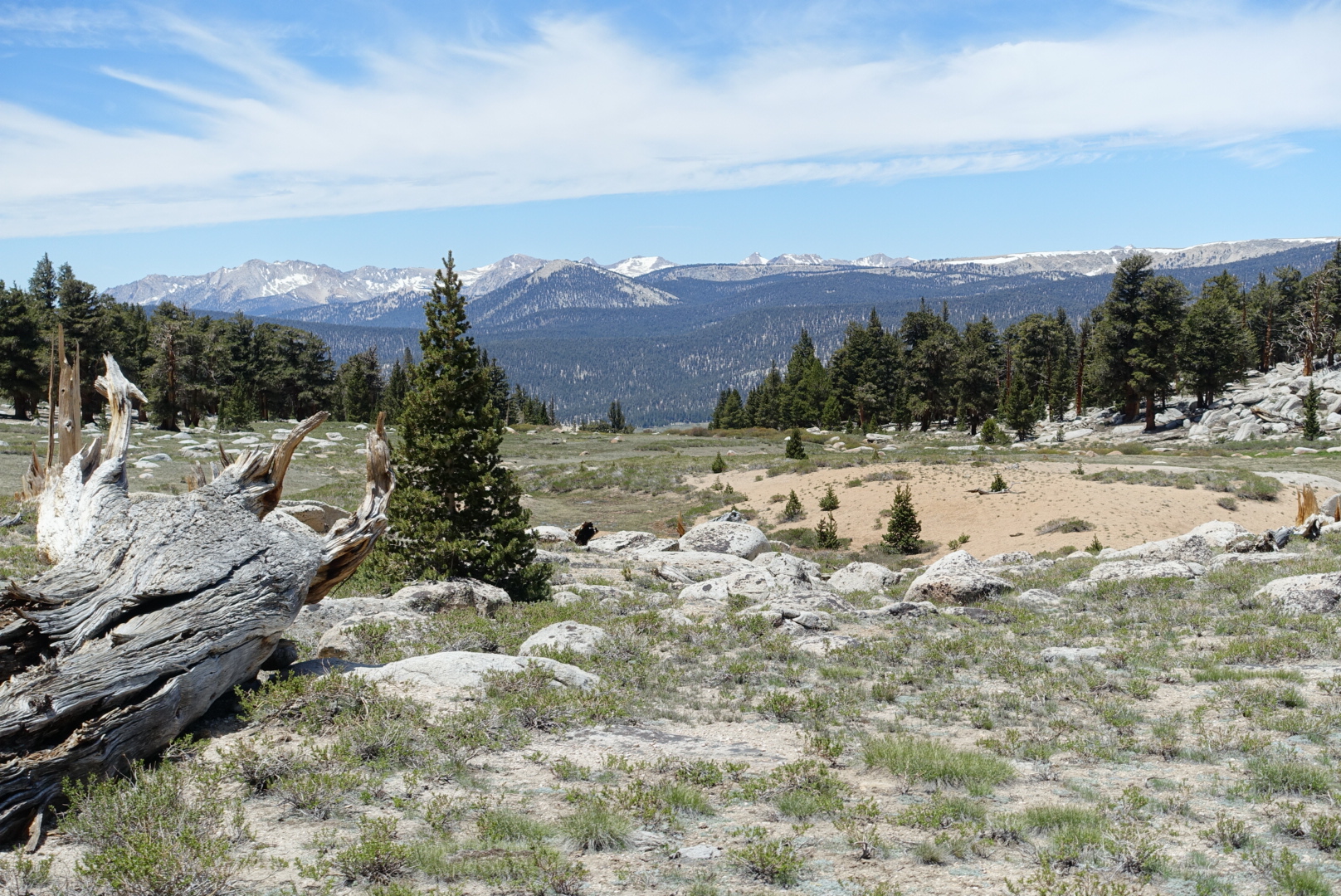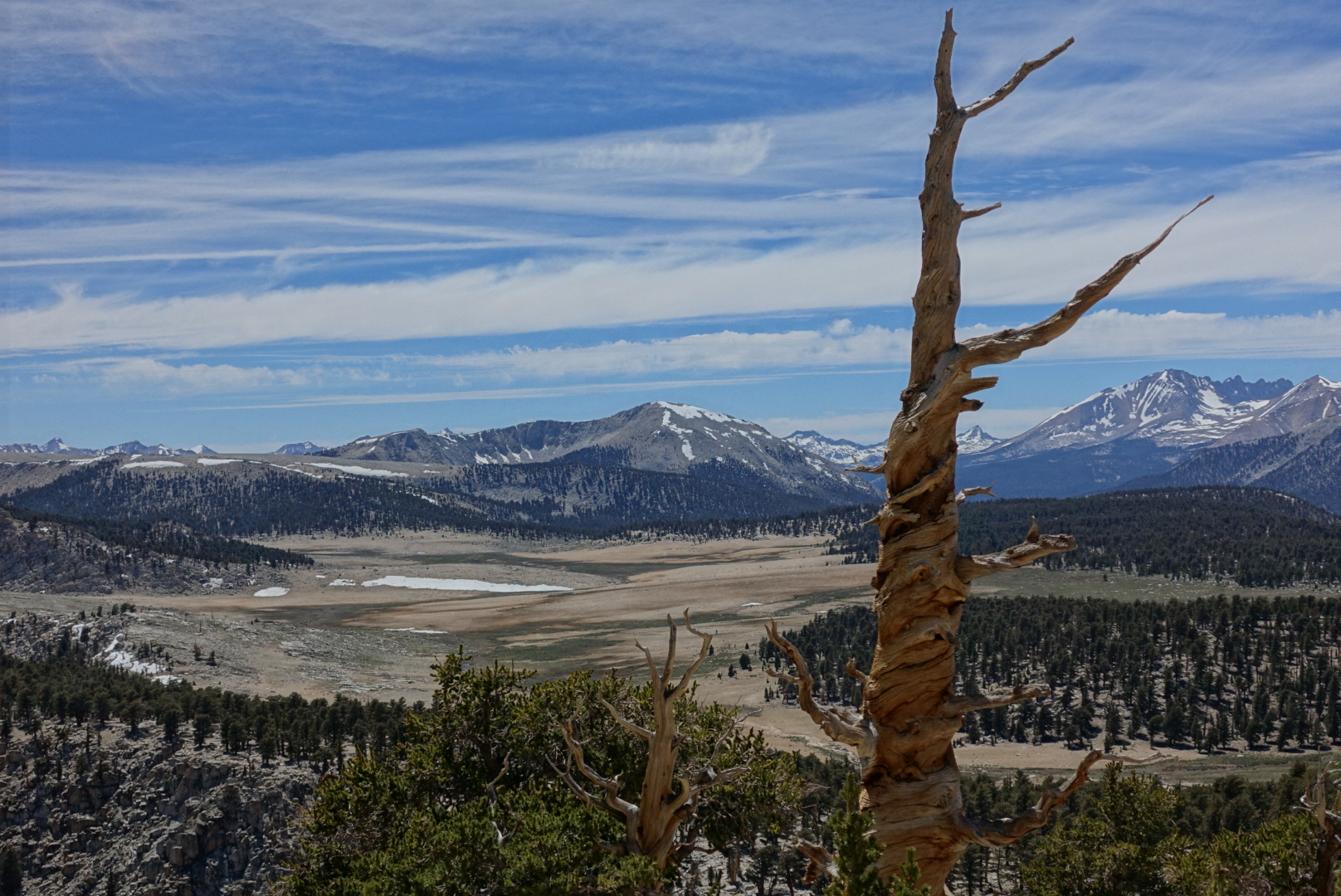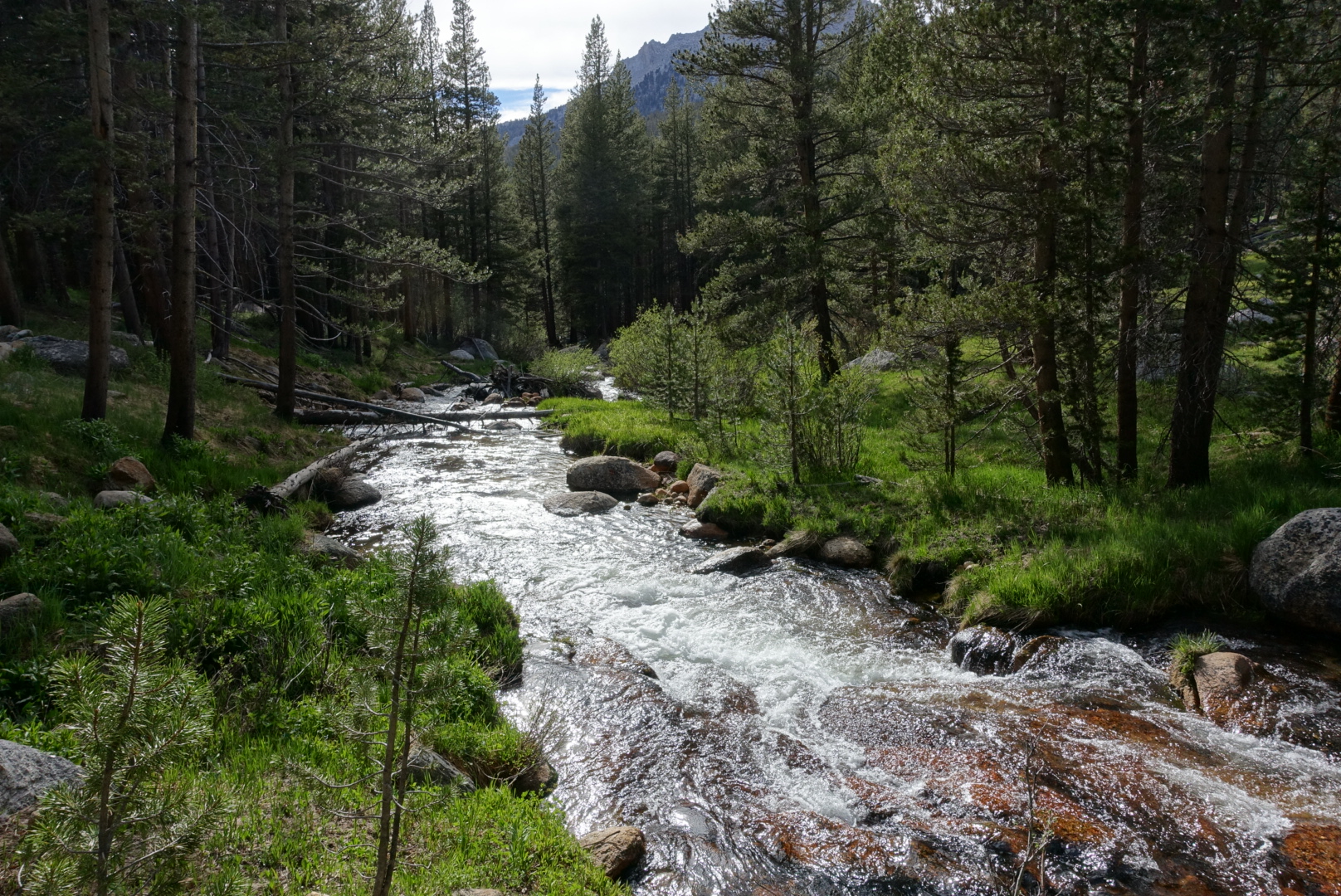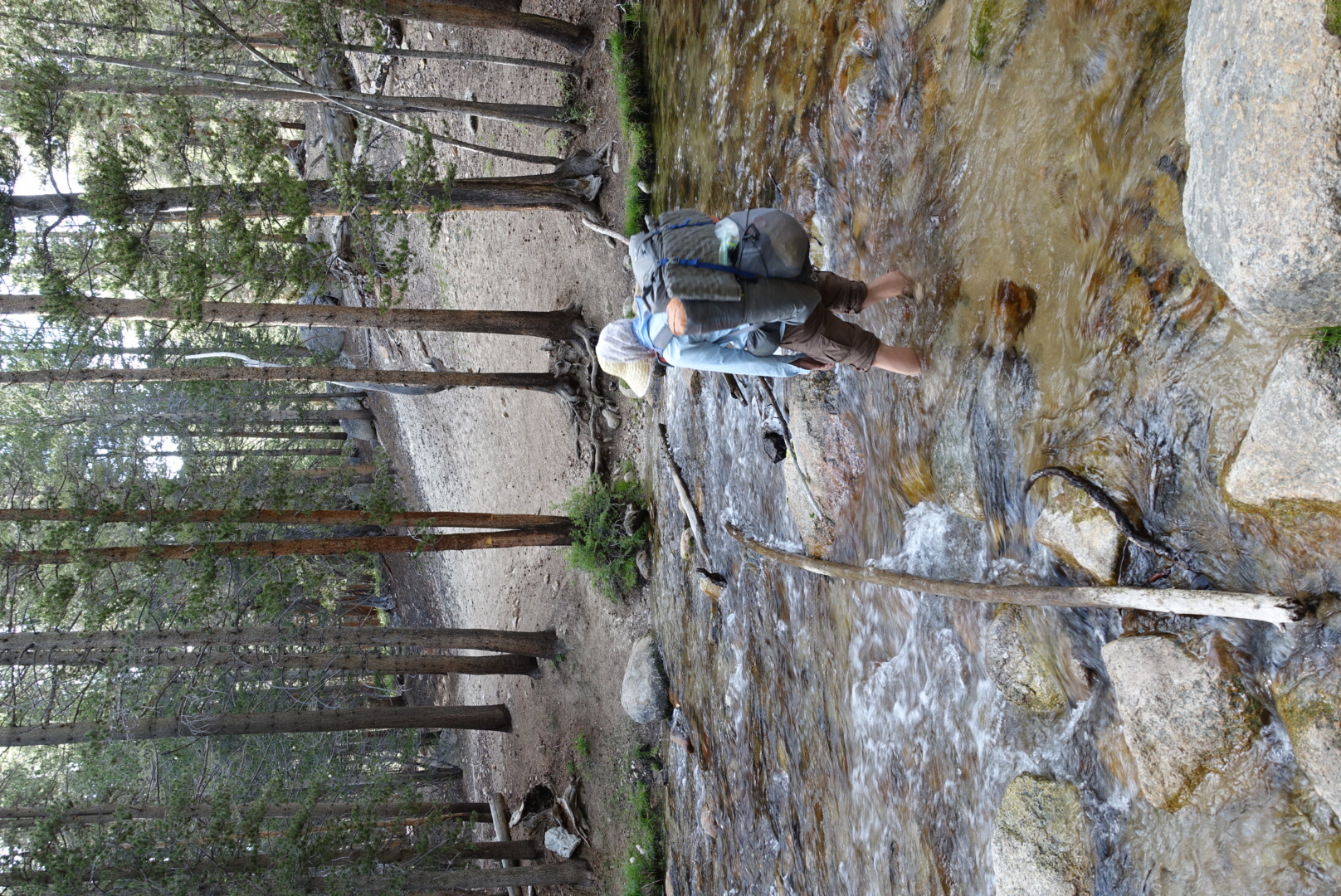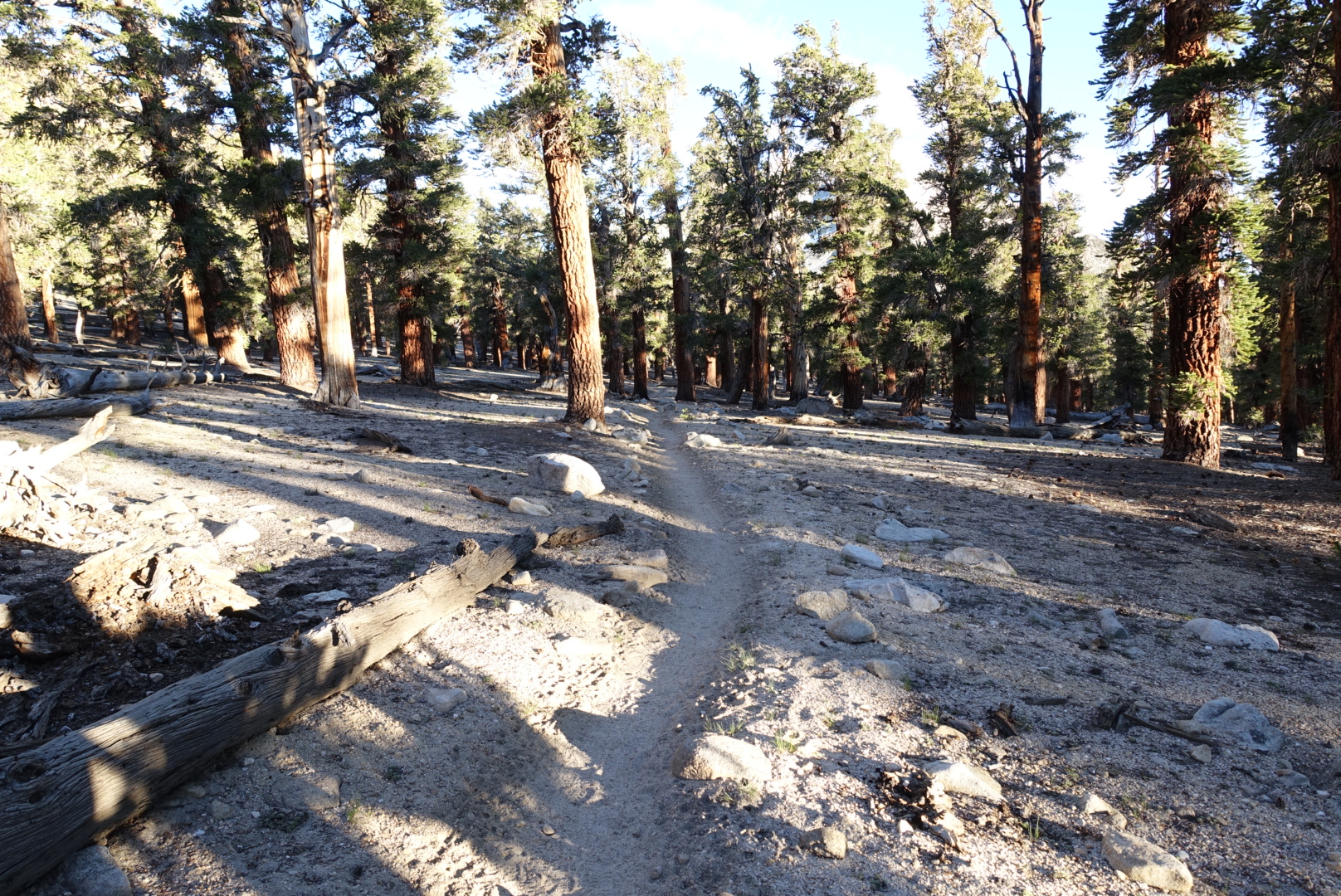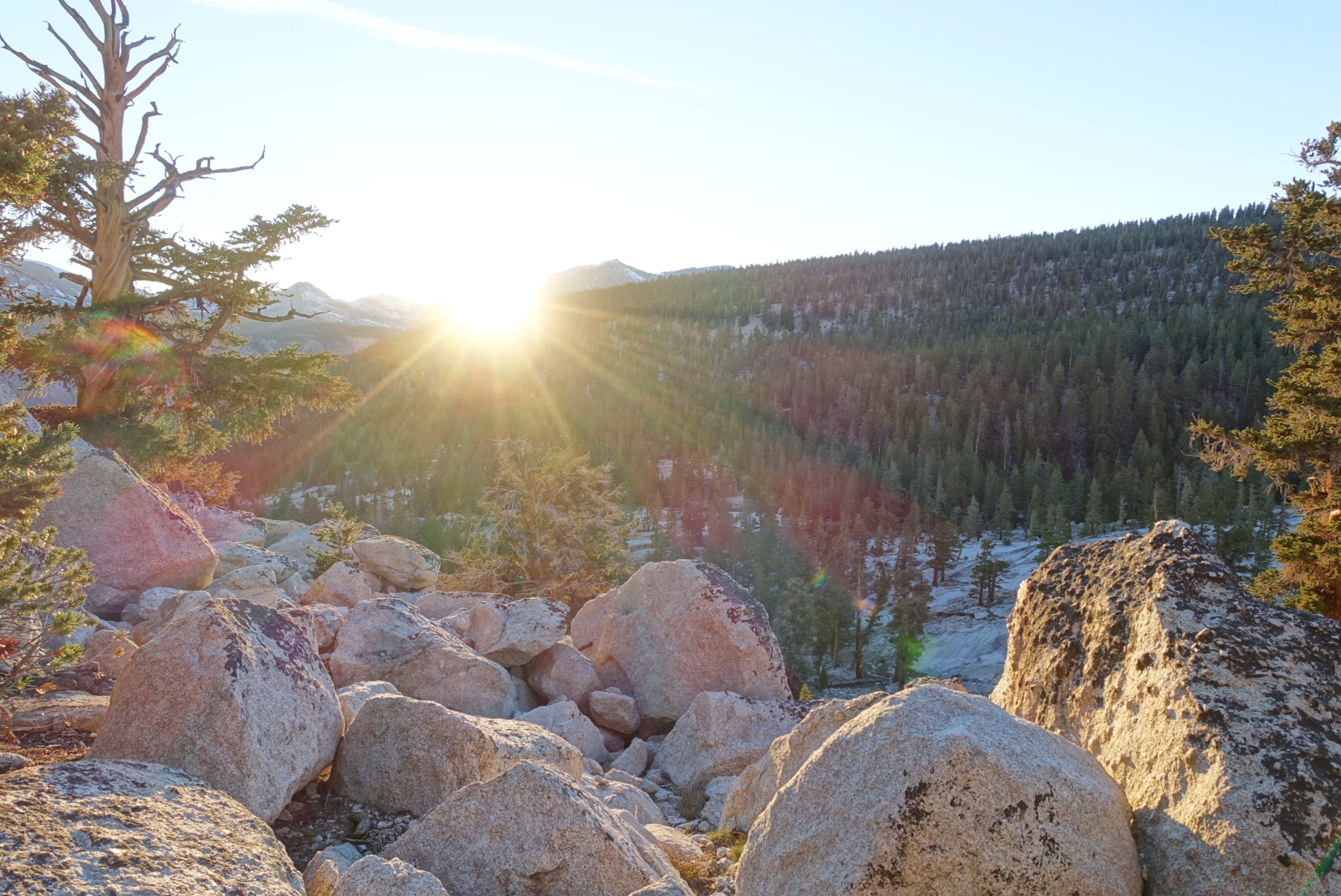Last night was much warmer than the night before. We were at the same elevation, and this site is more exposed – go figure. Regardless, we were on the west side of a large meadow, so we got warm sunlight very early. Getting up was easy.
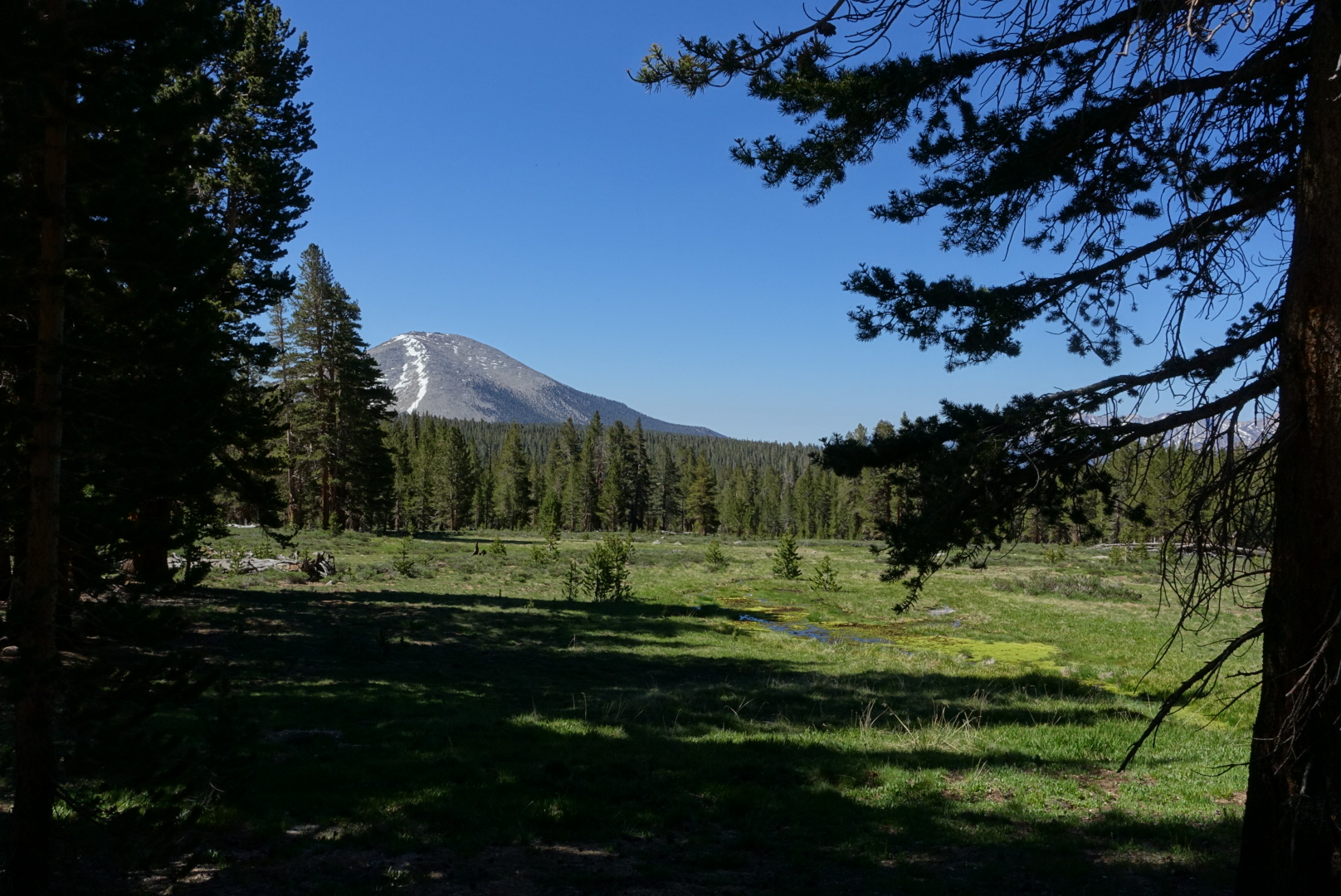
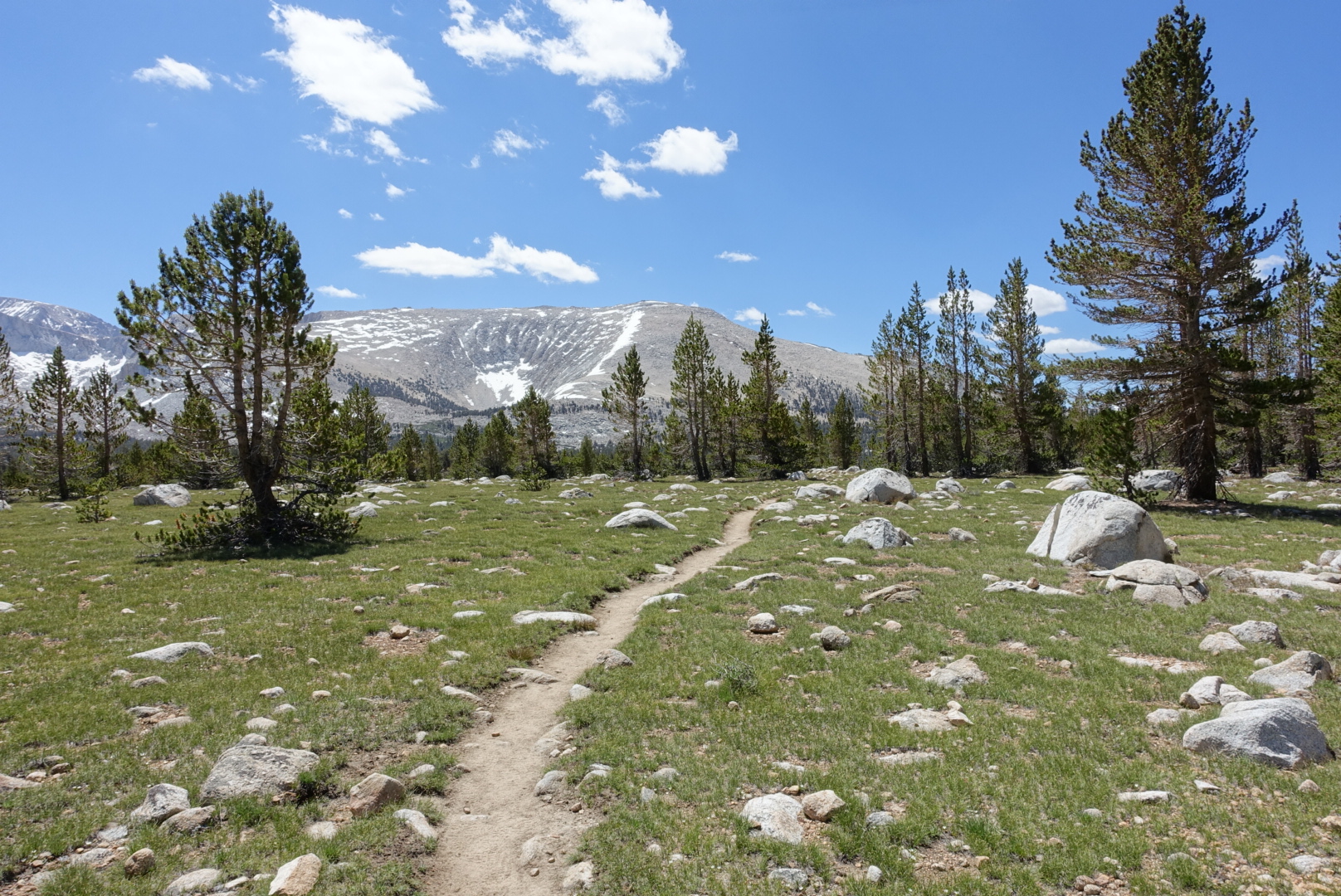
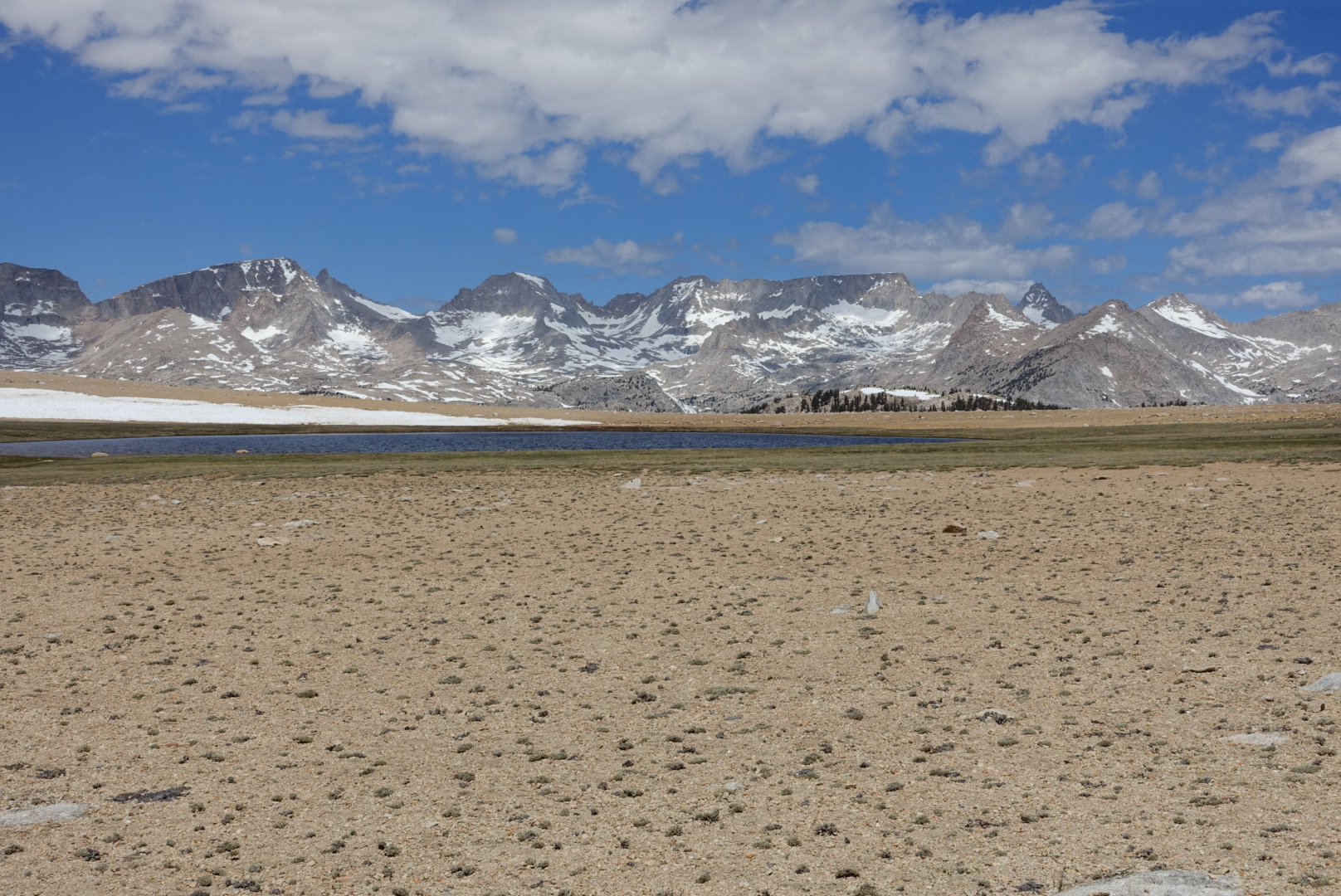

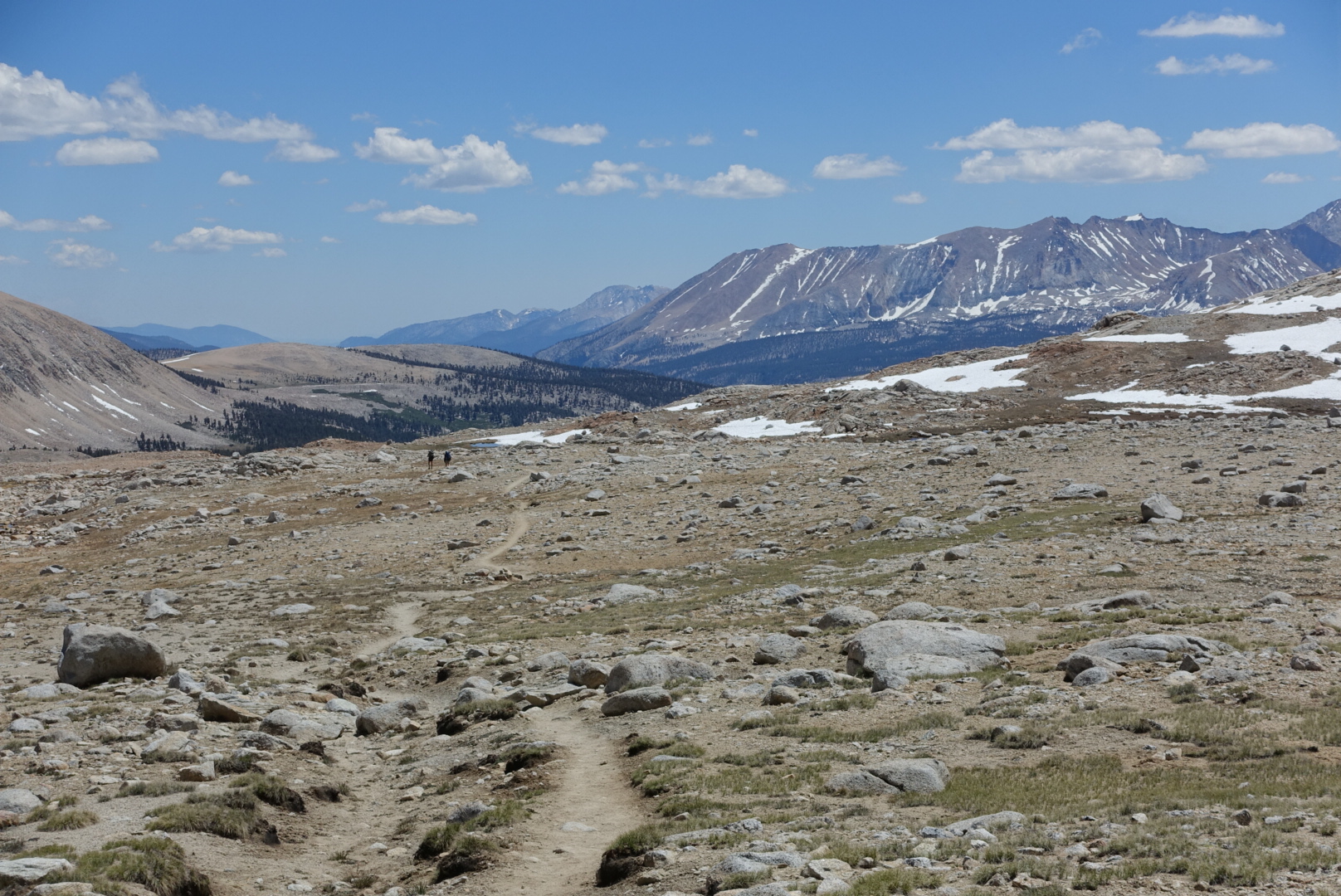
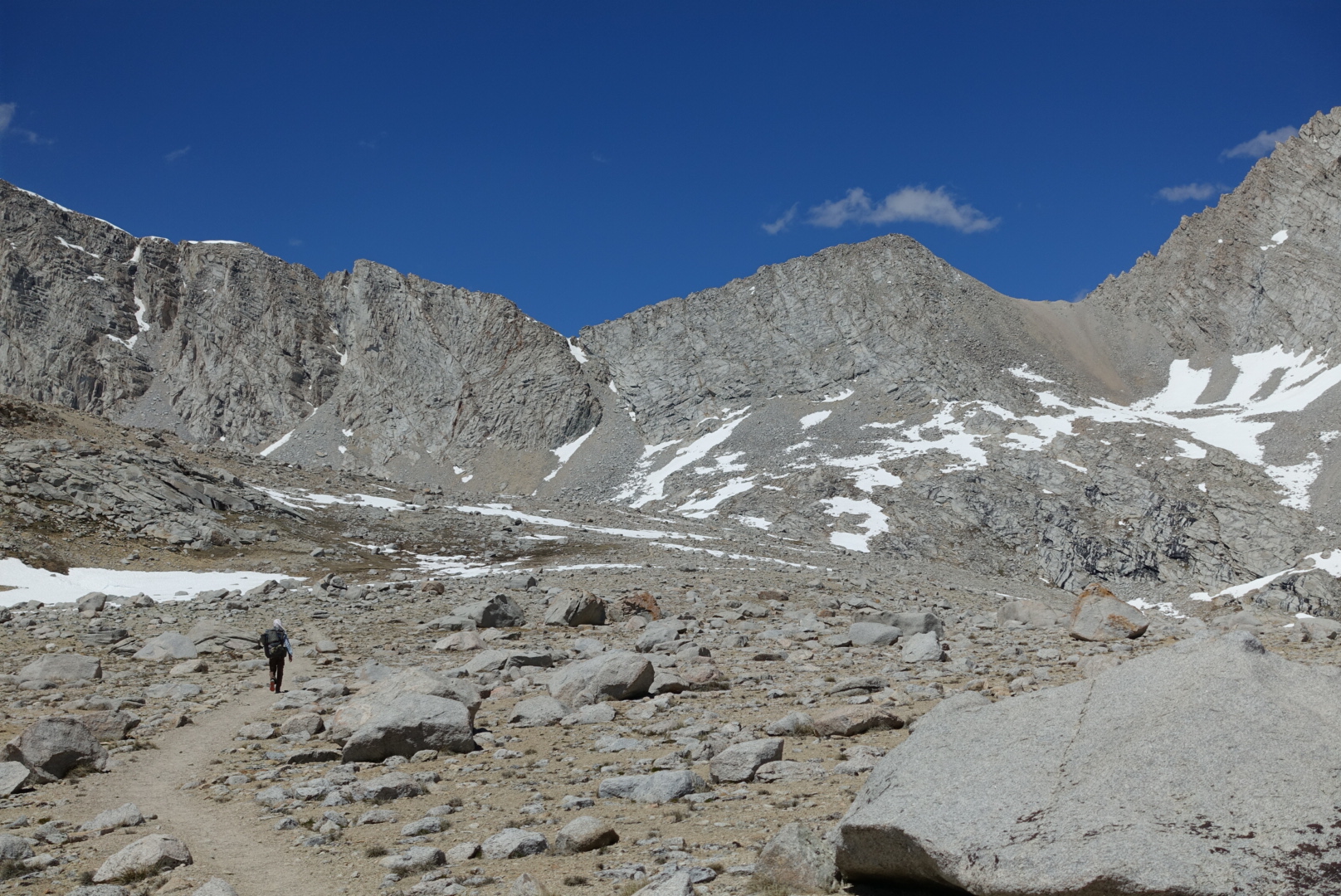
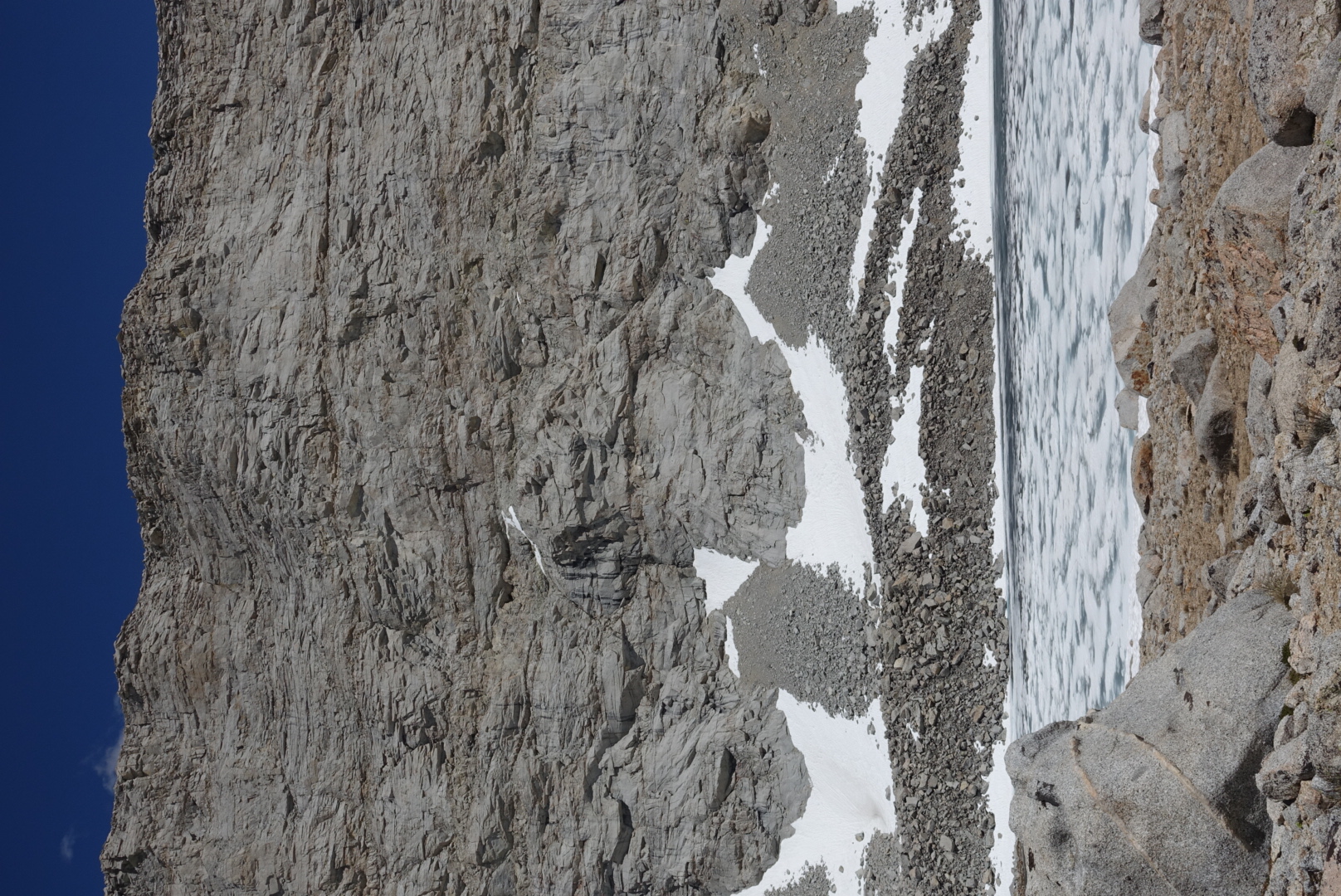
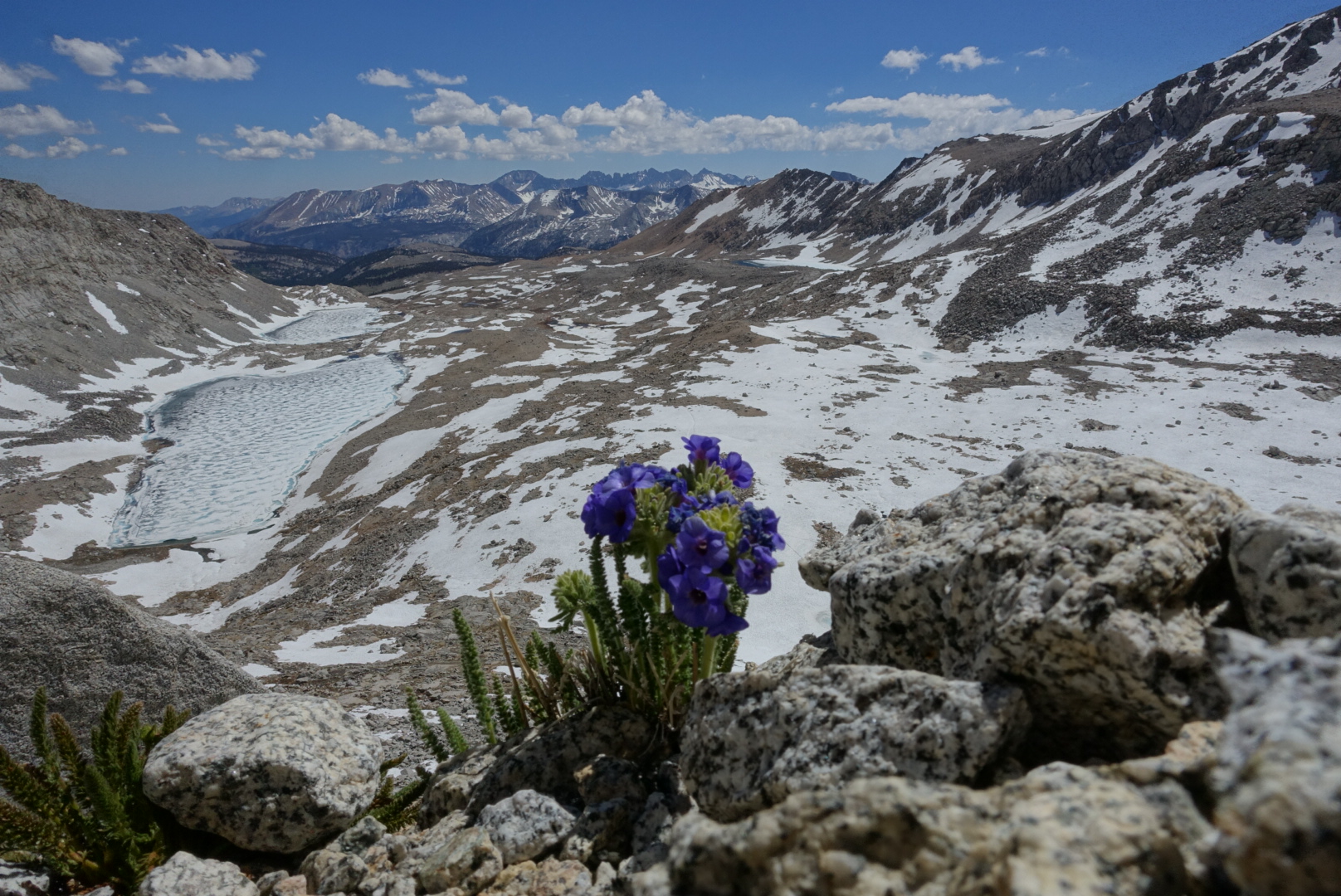
We had to ford three rivers today, but this was also surprisingly easy. Normally, people remove their shoes and socks before a ford, so that they don’t get wet. This takes a surprisingly long time, however (especially cleaning and drying your bare feet afterwards).
Today, however, the weather was warm, and the Sierra air is so dry, we just walked straight through each river — our shoes and socks dried reasonably quickly, though my feet pruned to a spectacular degree.
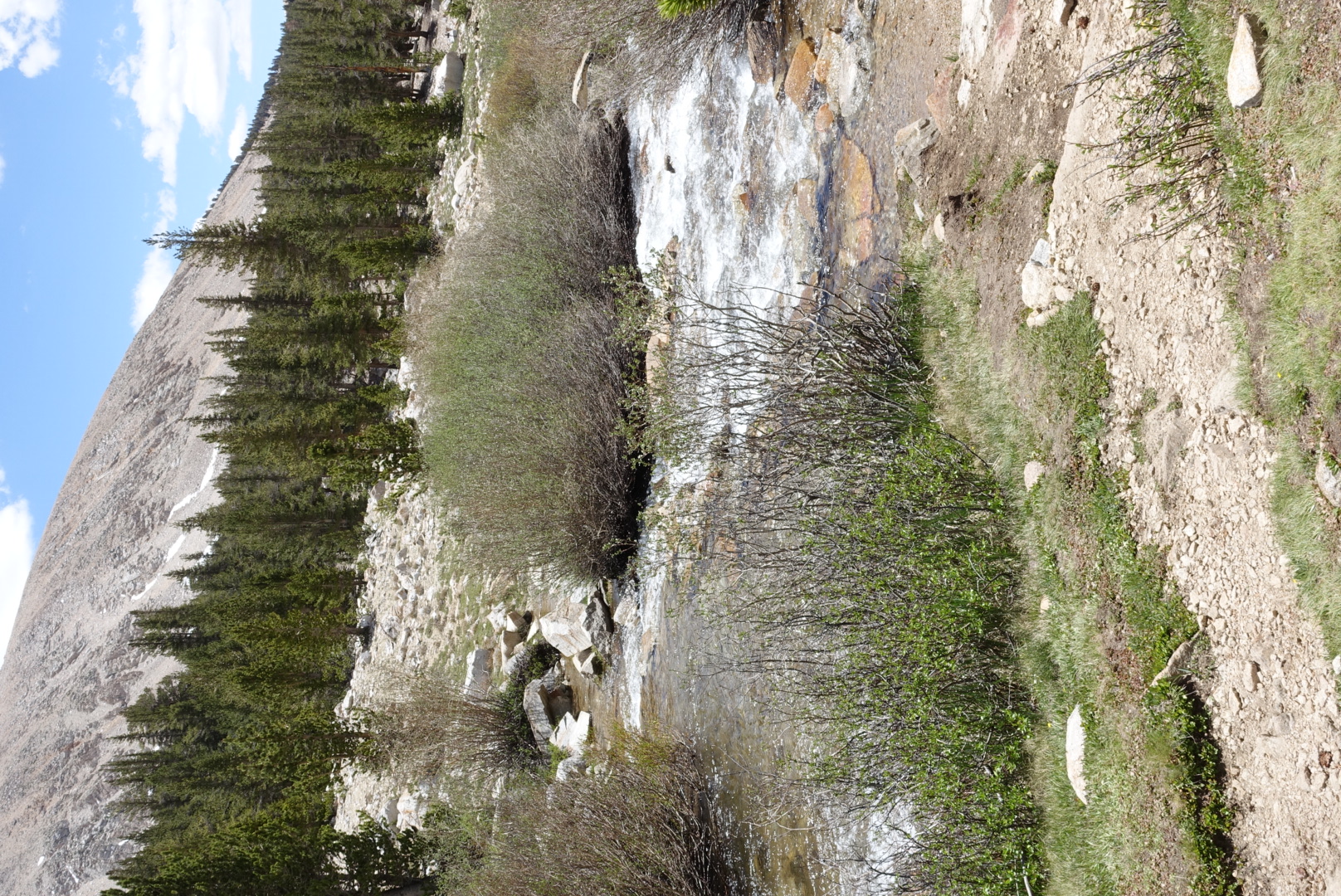
We had the first of our really high passes in the Sierras today — Forester Pass. At a little over 13000 feet, it’s the highest point on the PCT proper (recall that Mt. Whitney is near, but not on, the PCT).
It is recommended to go through the high passes in the Sierras in the early morning, when the snow on the ground is coldest, and therefore strongest. That would have required us to take a short day, though, and we didn’t want to do that. So, we would have to cross in the afternoon, when the snow would be slippery and easy to break through into the snowmelt streams below.
Surprisingly, this turned out to not be much of a problem. The snow was a bit slippery, but never put us in real danger. I just got my feet a bit wet.
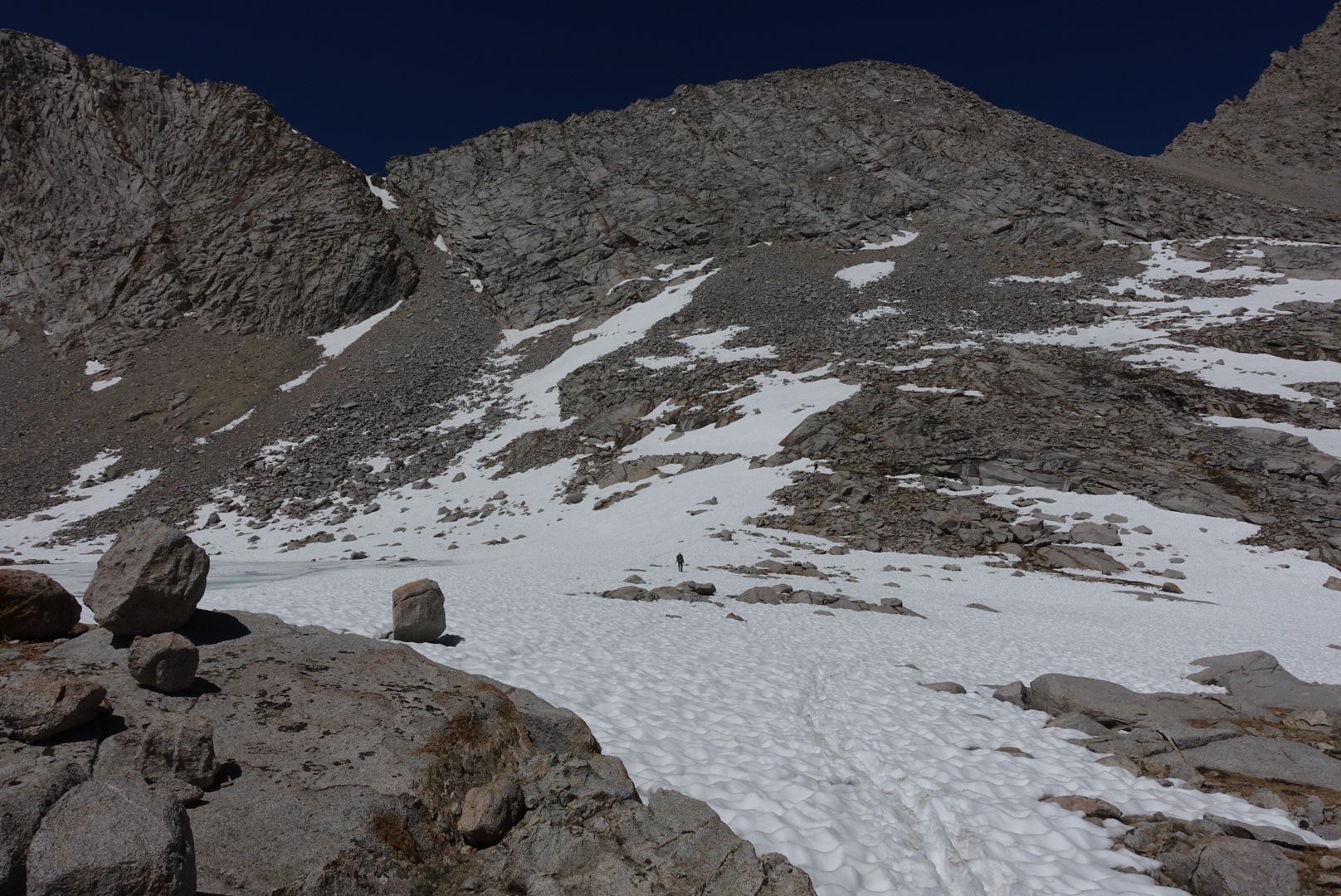
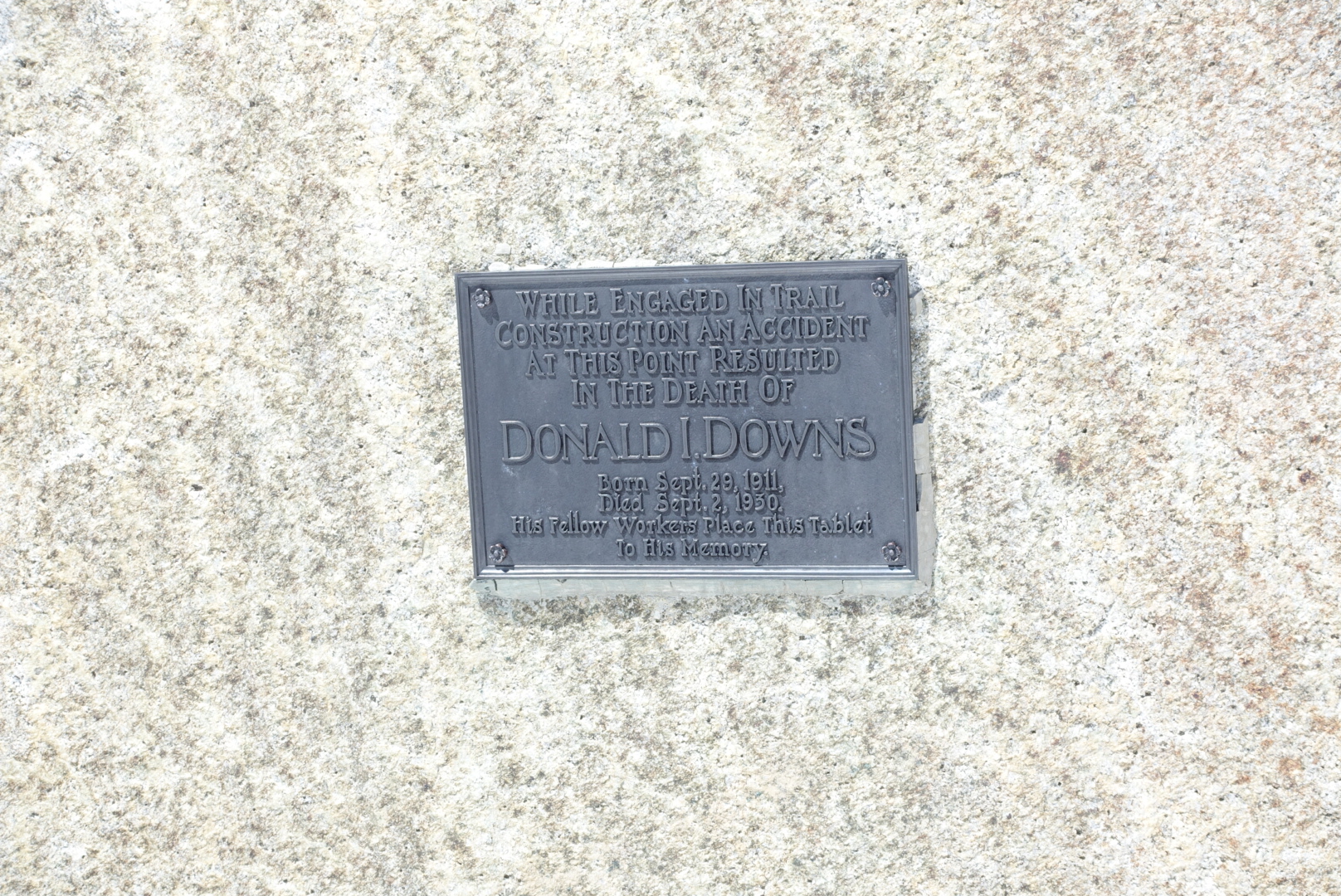
The pass itself was steep, and the climb was tough. But, I’d been through here before on my JMT hike, so I knew how hard it could be.
The top was the same as before — just with snow this time.
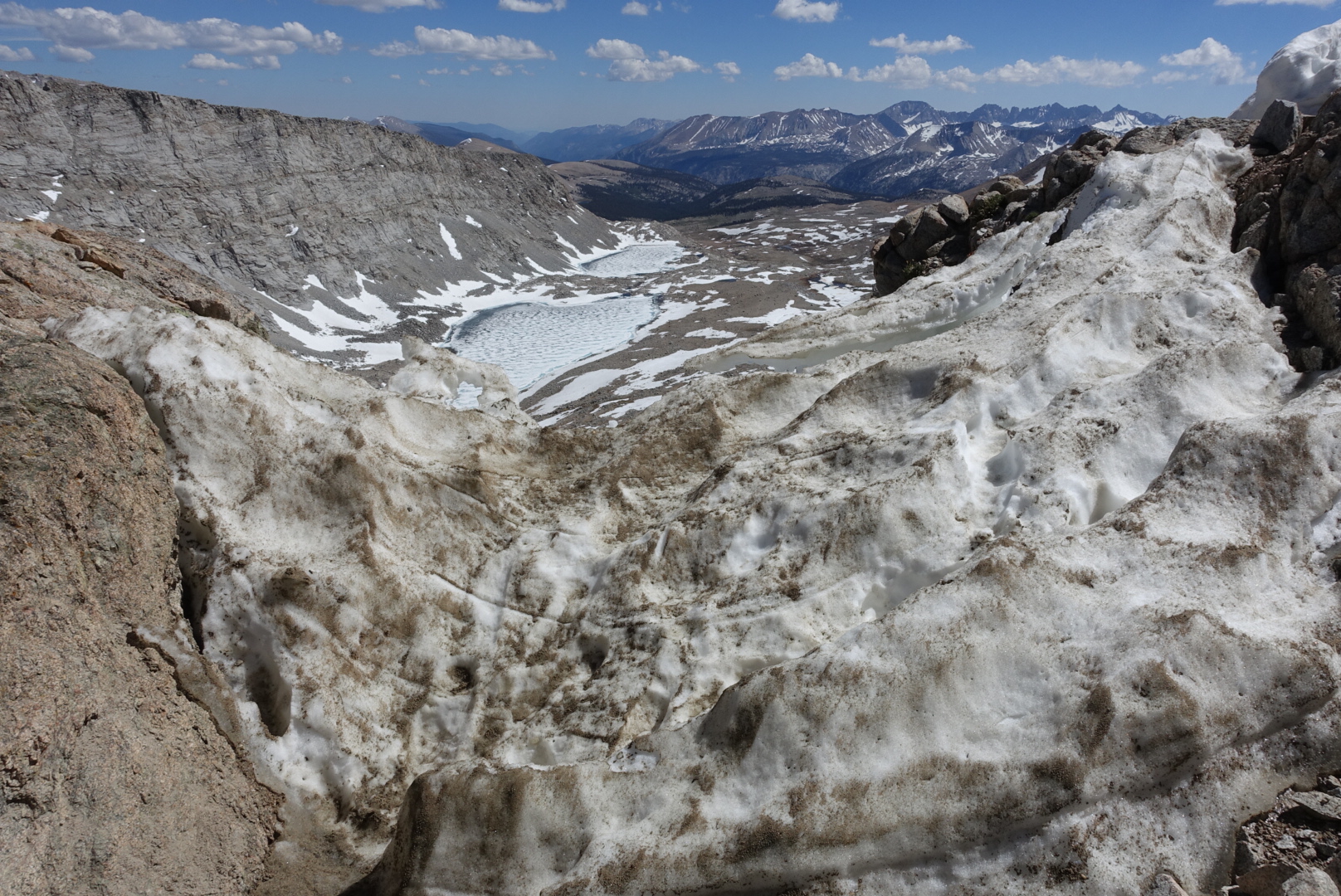
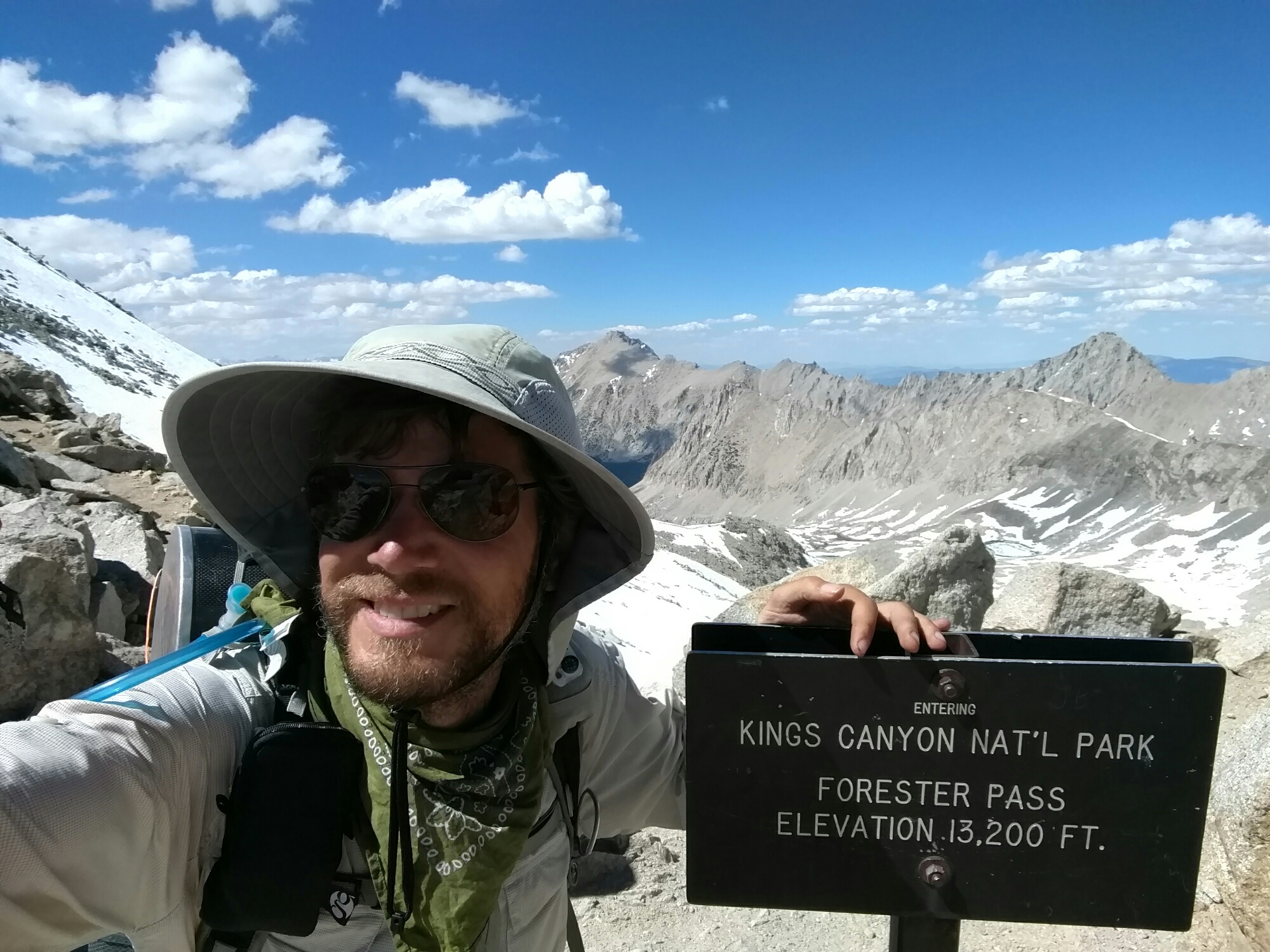
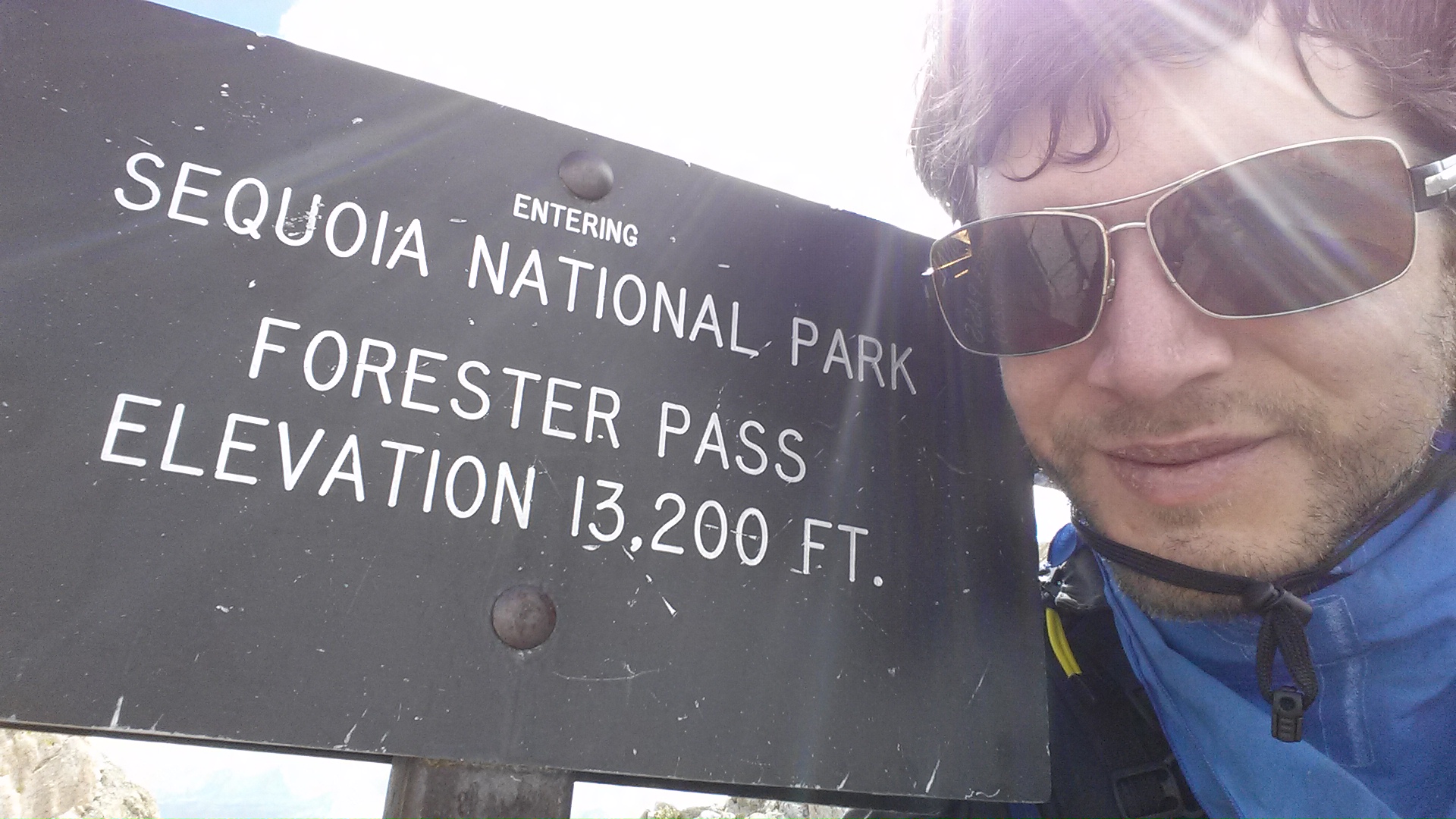
As we descended from the summit we had our first opportunity to glissade — to sit down on the snow, and slide our way downhill instead of hike. The north side of a pass tends to have more snow, and Forester was no exception –there was ample slippery snow.
The glissade chute was about 80 feet long, cutting off a few hundred feet of trail. I didn’t want to sit in the snow, but Elizabeth gave the glissade a try.
It turned out, despite the slipperiness of the snow, sliding on purpose was hard. She had to push herself along at some points, and made a slow and awkward (but direct) descent to the trail below. I put on my Microspikes, and walked down the trail, postholing a lot on the way (“postholing” is when your foot breaks through the surface of weak snow, burying one of your legs. Like driving a post into a posthole.)
Snowy and rocky trail followed, as we made our way down from Forester.
Near the bottom of the descent, there was one last snow crossing. It was short, so I didn’t bother with my Microspikes.
Before I knew it, I was glissading, unintentionally, towards the bottom of the slope. Holding my trekking poles, I shoved my fists into the snow, again and again, to slow down. Eventually, it worked, and I stopped.
I looked back at where I’d come from, and saw that I’d slid about 10 feet — just about the full height of the slope. The trail happened to be at the bottom of the slope, so I dusted myself off, and continued on, having just unintentionally skipped a switchback.
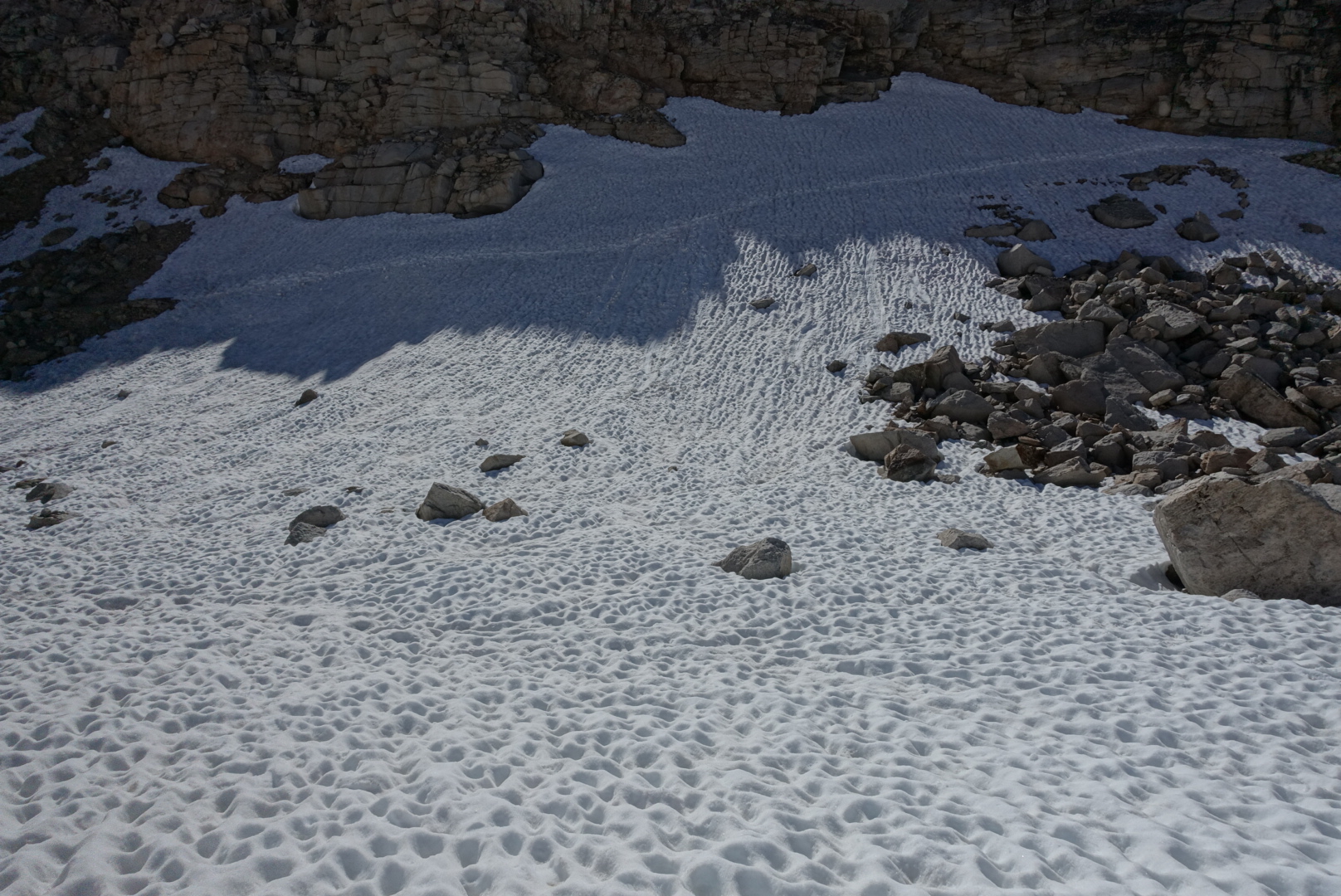
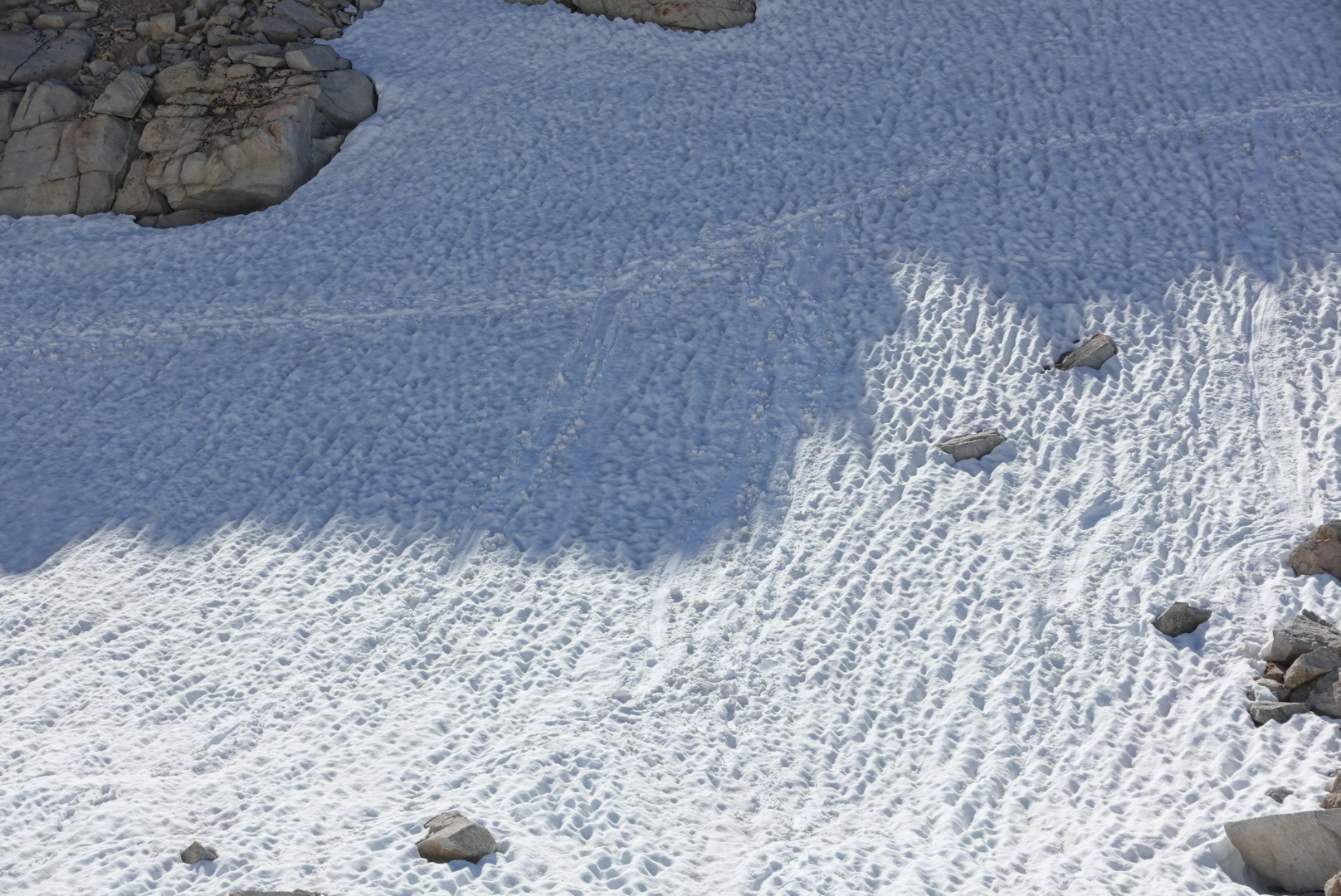
After the snowy decent, we entered King’s Canyon, with lush green trees and a raging river of snowmelt. With all that water comes mosquitoes, however, so I finally get the chance to use my headnet.
Our camp, in particular, had a lot of mosquitoes. Getting in and out of the tent without them is trouble.
As I went to bed, I noticed my knuckles were bloody — snow is sharp!
